Author: Charging Head Network Time: 2025-05-15 08:50:09
PANDAER, a brand under Meizu, has launched a gallium nitride charger with a transparent shell. This charger features a transparent matte plastic shell and is assembled with three-color modules inside, presenting a rather distinctive appearance design. It adopts folding pins, making it more convenient to carry in daily life. It is a very eye-catching charger.
The charger is equipped with three fast charging interfaces, 2C1A, supporting blind plug use and intelligent power distribution. It can charge multiple devices simultaneously, meeting the daily charging needs of laptops and mobile phones, etc. It is both beautiful and practical. Now, let's disassemble this 65W gallium nitride charger from PANDAER to take a look at its internal materials and design.
Unboxing of PANDAER 65W Gallium Nitride Charger
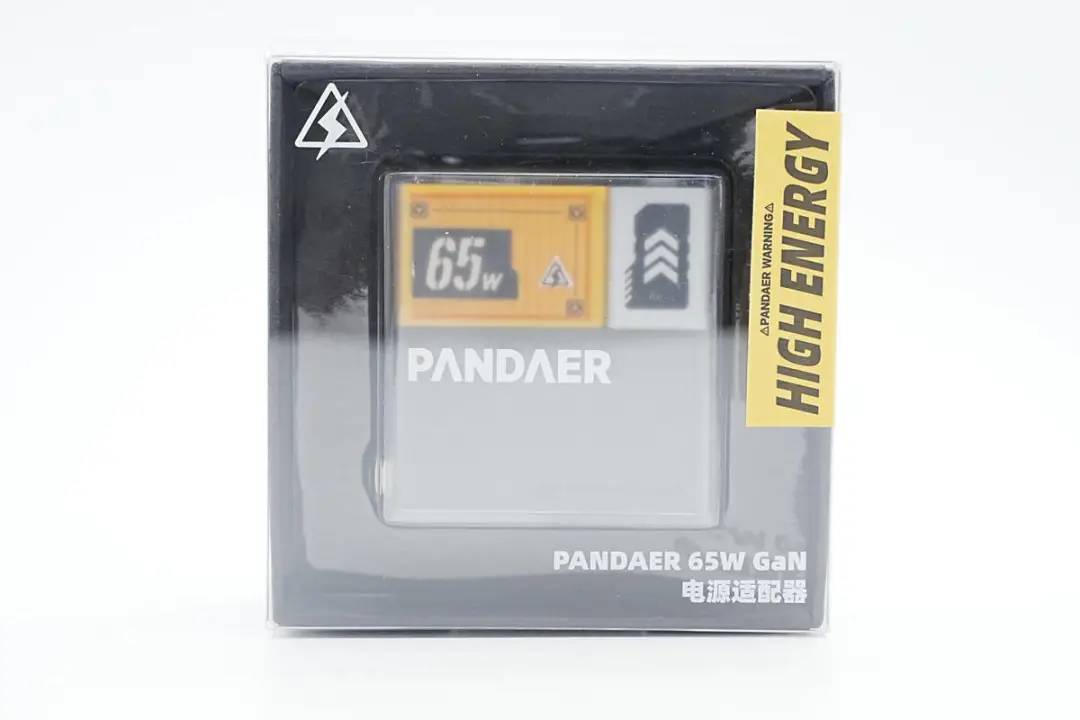
The front of the packaging box is printed with the product name and warning words. Through the box, you can see the actual charger inside.

The back is printed with product parameters, packaging contents and merchant information, etc.
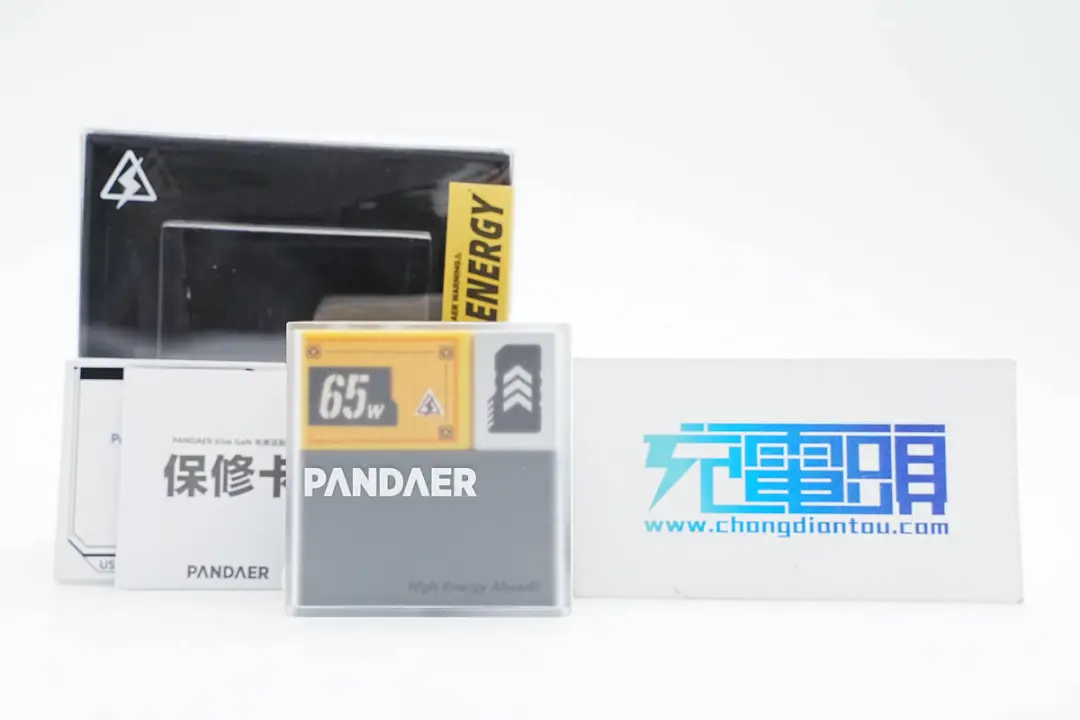
The package contains a charger, an instruction manual and a warranty card.
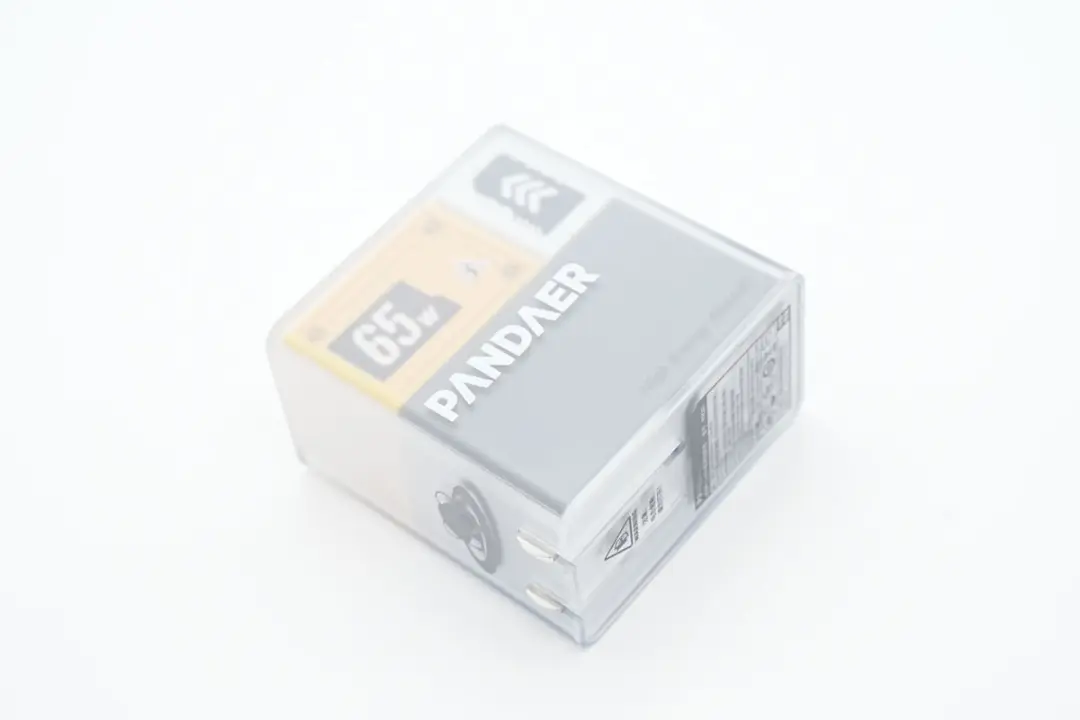
The outermost layer of the charger is a transparent matte plastic shell, while the interior is assembled with silver, yellow and black plastic modules. It features a double-layer design of four modules, giving it a rather distinctive overall appearance.

The inner and outer plastic shells of the body are printed with arrows, 65W, PANDAER brand, etc.

The back also features PANDAER brand silk-screen printing, with a trendy style.
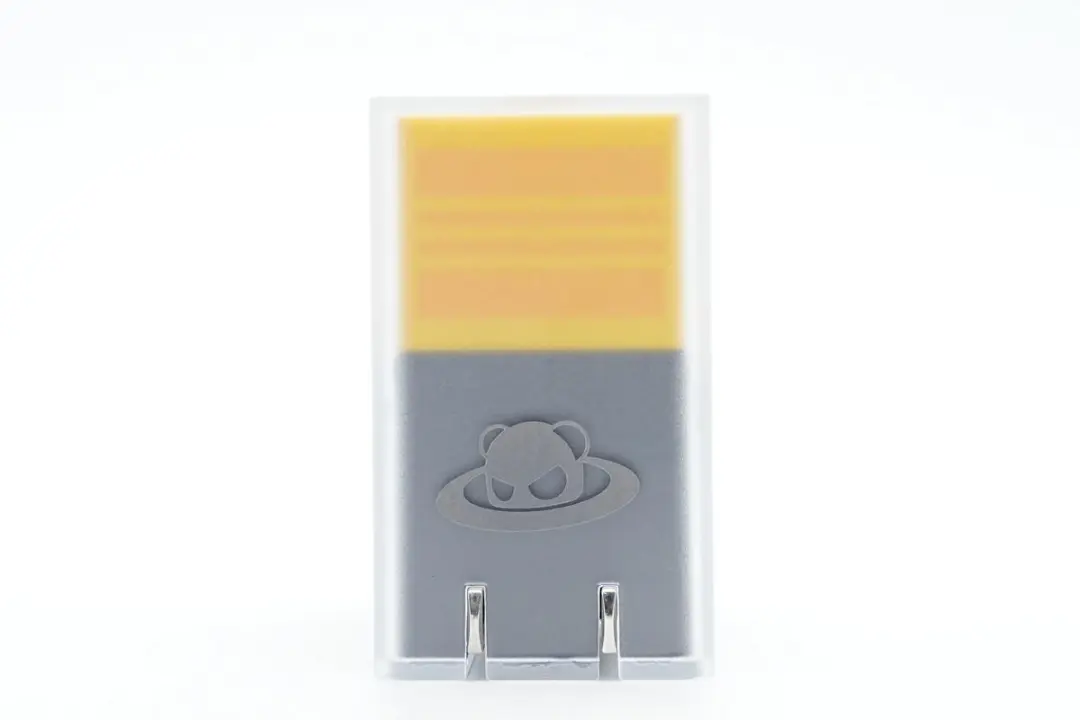
The side is printed with a panda pattern.
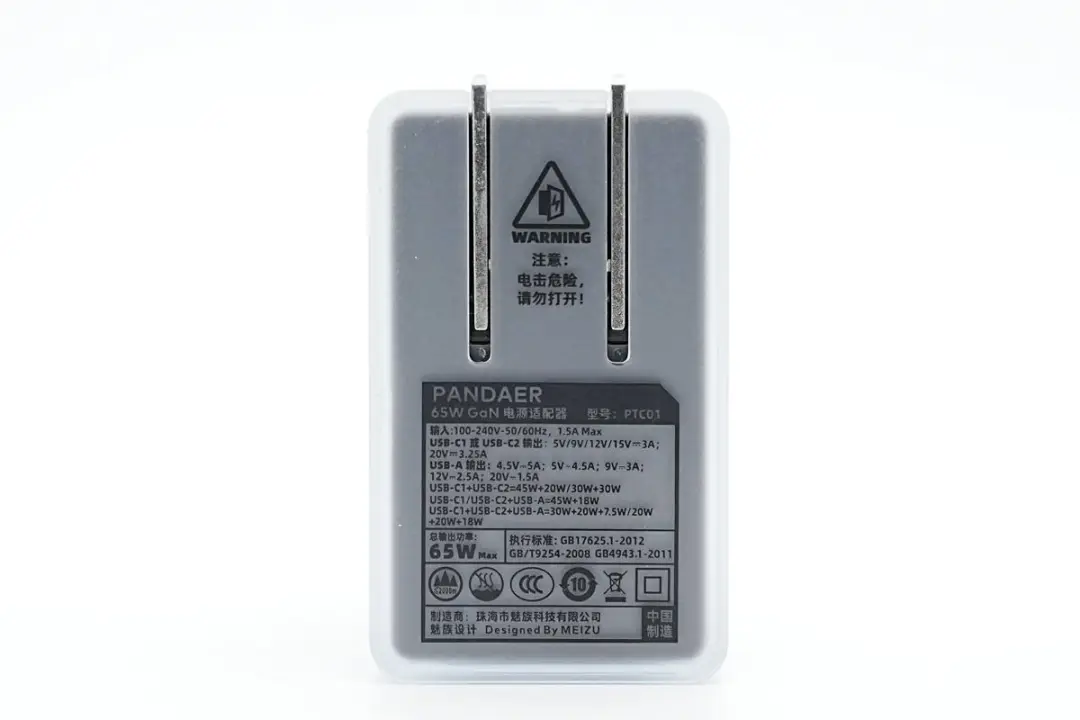
The input terminal shell is printed with the parameters of the charger.

Close-up of Charger Parameters
Model: PTC01
Input: 100-240V~50/60HZ 1.5A
Output
USB-C1/C2:5V3A, 9V3A, 12V3A, 15V3A, 20V3.25A
USB-A: 4.5V5A, 5V4.5A, 9V3A, 12V2.5A, 20V1.5A
Dual-port output
USB-C1+USB-C2:45W+20W/30W+30W
USB-C1/C2+USB-A: 45W+18W
Three-port output
USB-C1+USB-C2+USB-A: 30W+20W+7.5W/20W+20W+18W
Total output power: 65W Max
Manufacturer: Zhuhai Meizu Technology Co., LTD
The product has passed the CCC certification.
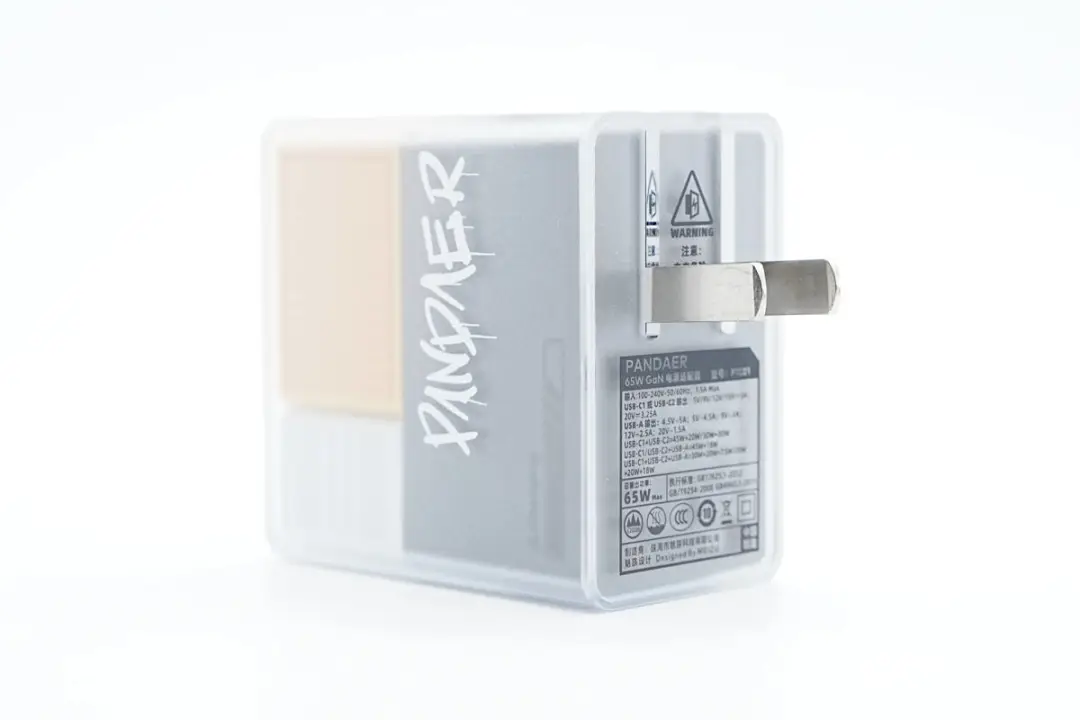
The charger is equipped with foldable national standard pins, making it convenient to carry.
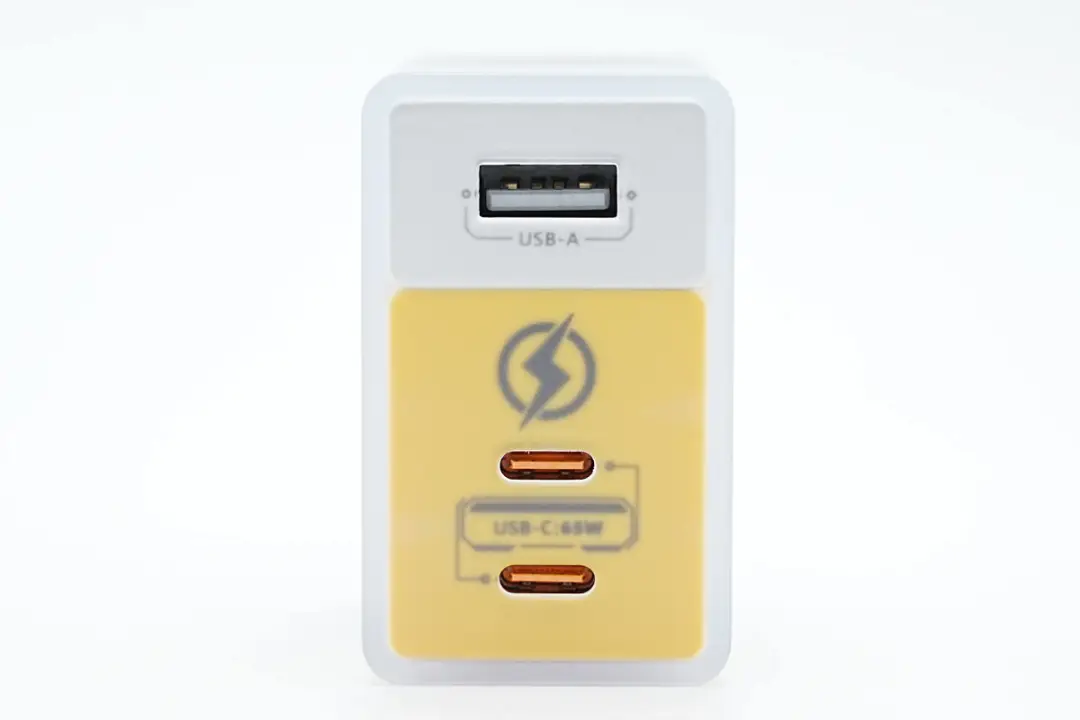
The output terminal is equipped with three USB interfaces: 2C1A.

The height of the charger body was measured to be 55.87mm.
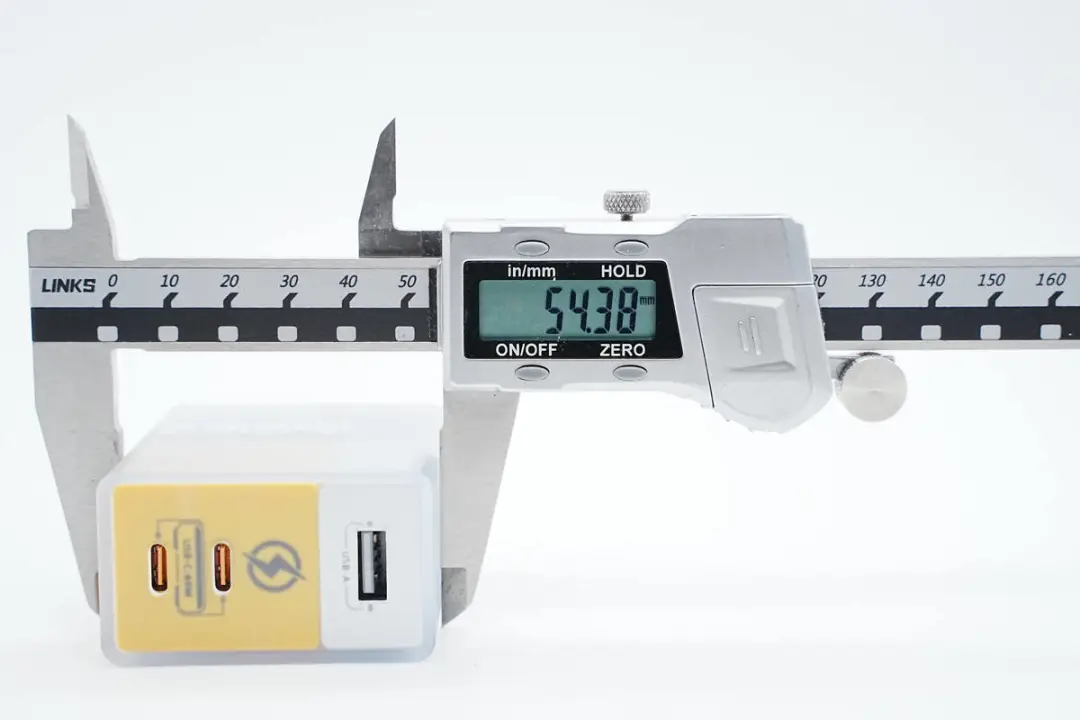
The width is 54.38mm.
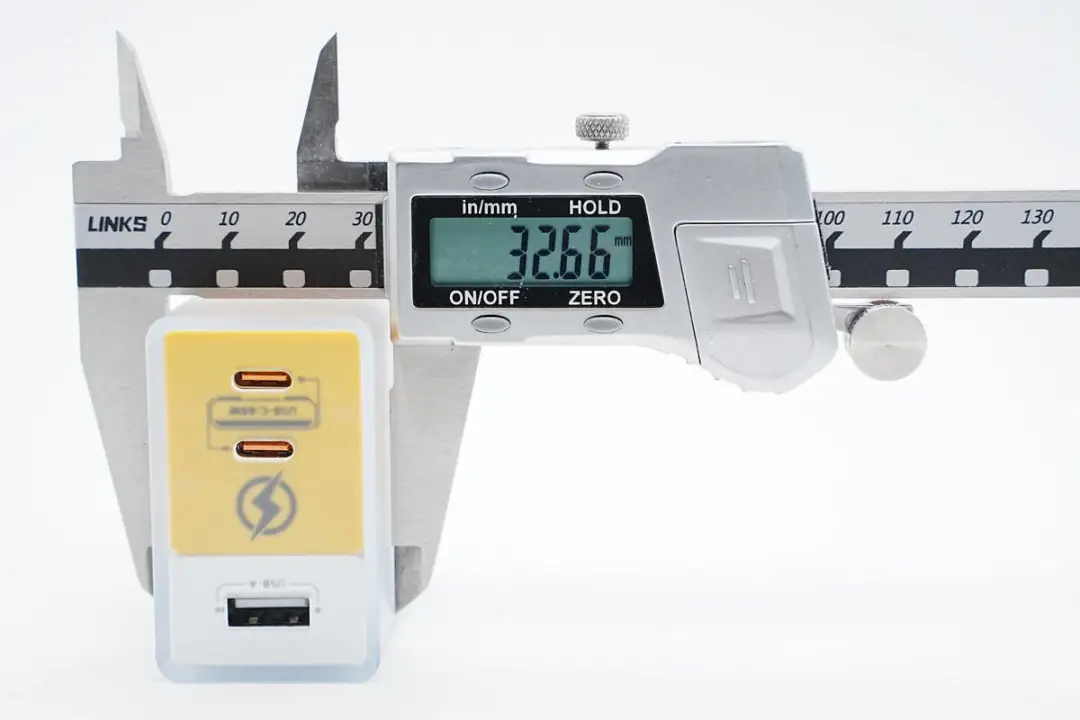
The thickness is 32.66mm.

Compared with the 61W charger of Apple, it has a significant advantage in size.

The size when held in hand is intuitively felt.

The net weight of the charger is approximately 129g.
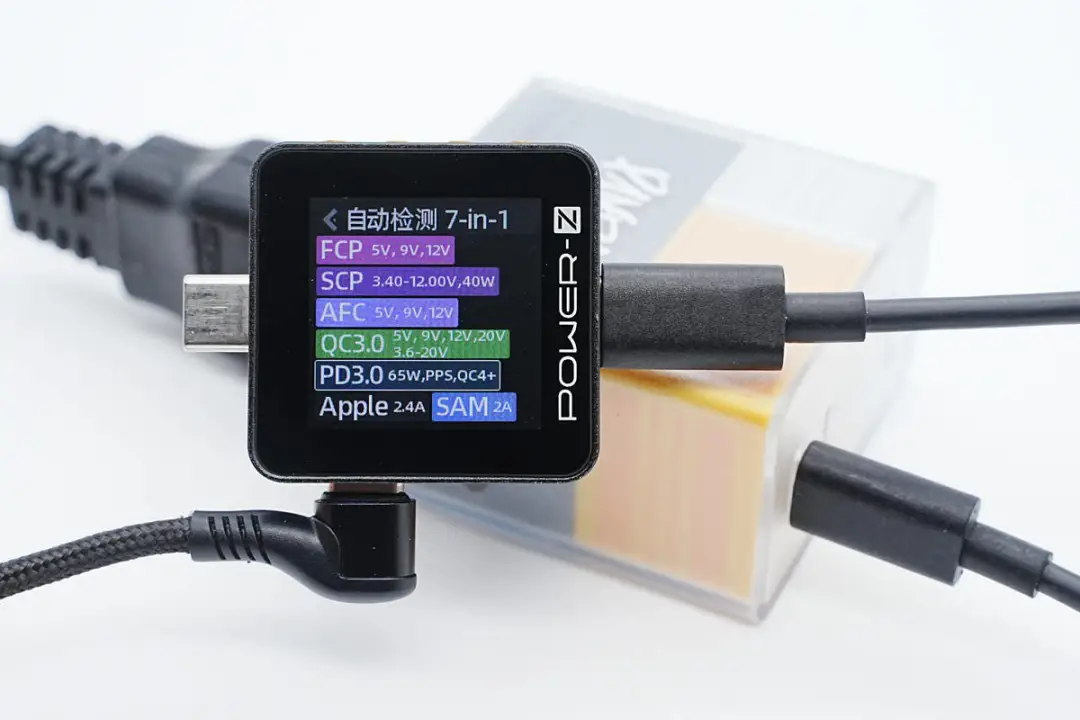
Using ChargerLAB POWER-Z KM002C, it was measured that the USB-C1 port supports FCP, SCP, AFC, QC3.0, QC4+, PD3.0, PPS, Apple2.4A, and Samsung 5V2A charging protocols.
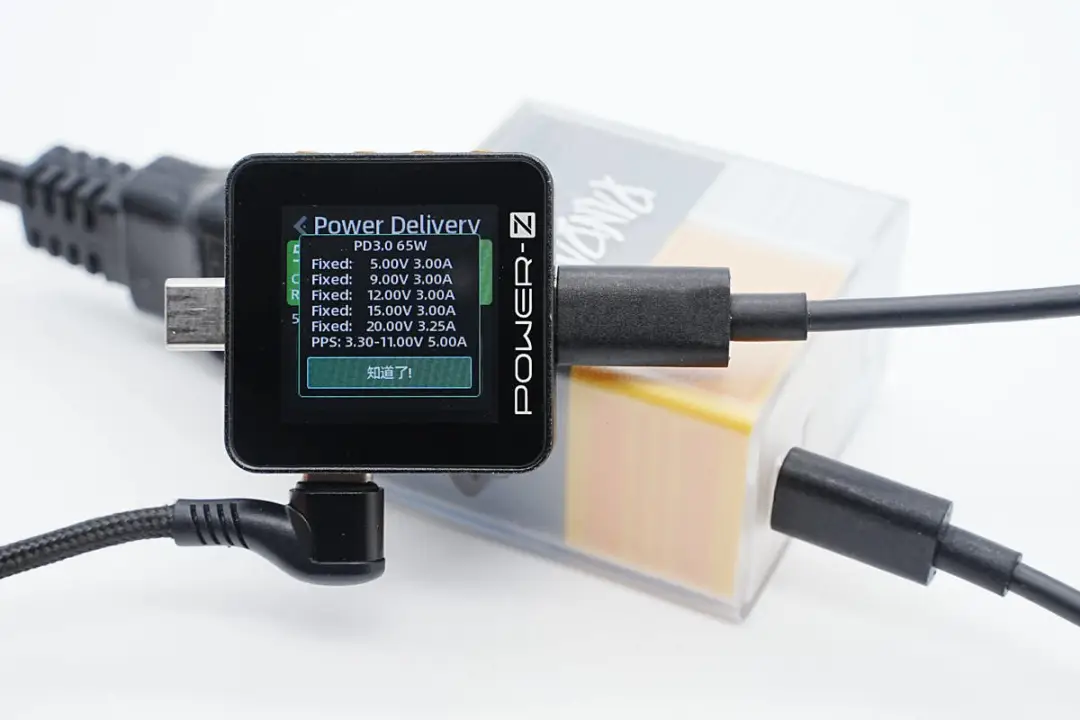
It also features five fixed voltage ranges: 5V3A, 9V3A, 12V3A, 15V3A, and 20V3.25A, as well as one PPS voltage range from 3.3 to 11V5A.
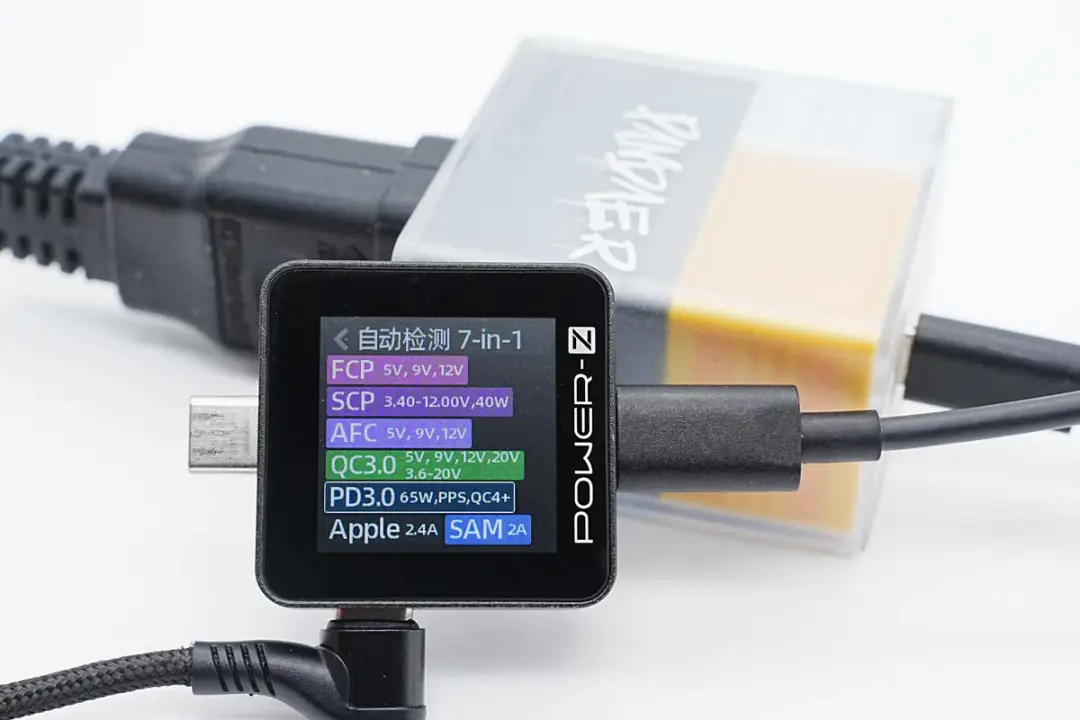
The compatibility protocol of the USB-C2 port was measured to be exactly the same as that of the C1 port.
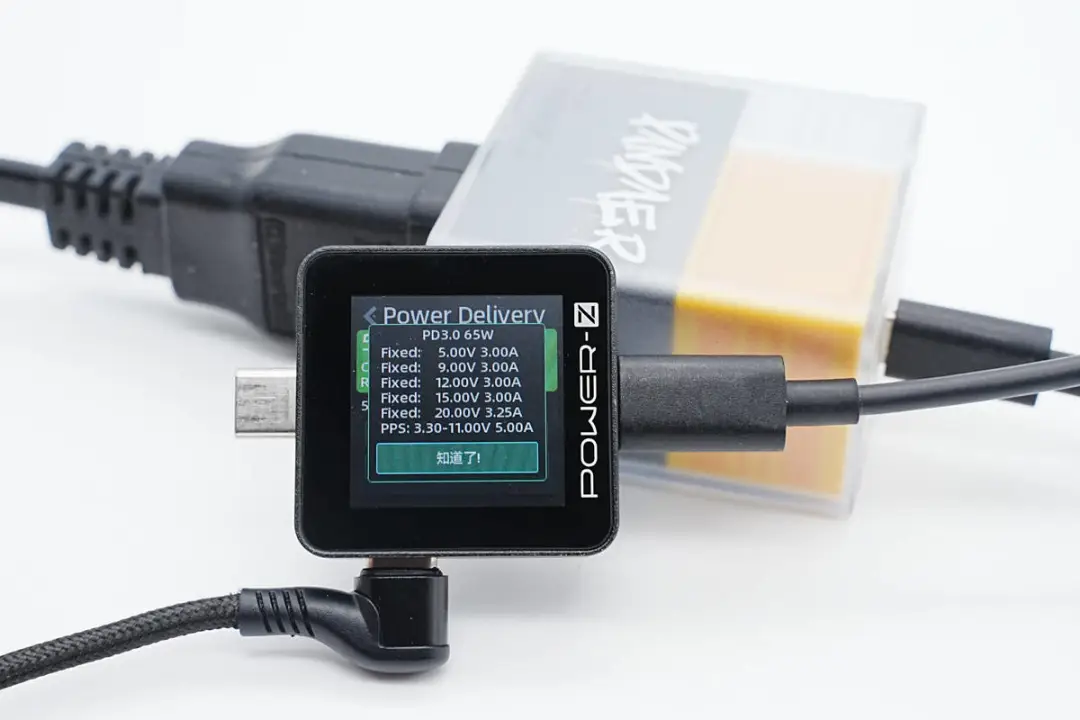
The PDO message is the same, that is, the single-port output performance of the two C ports is the same, supporting power blind insertion, making daily use more convenient.
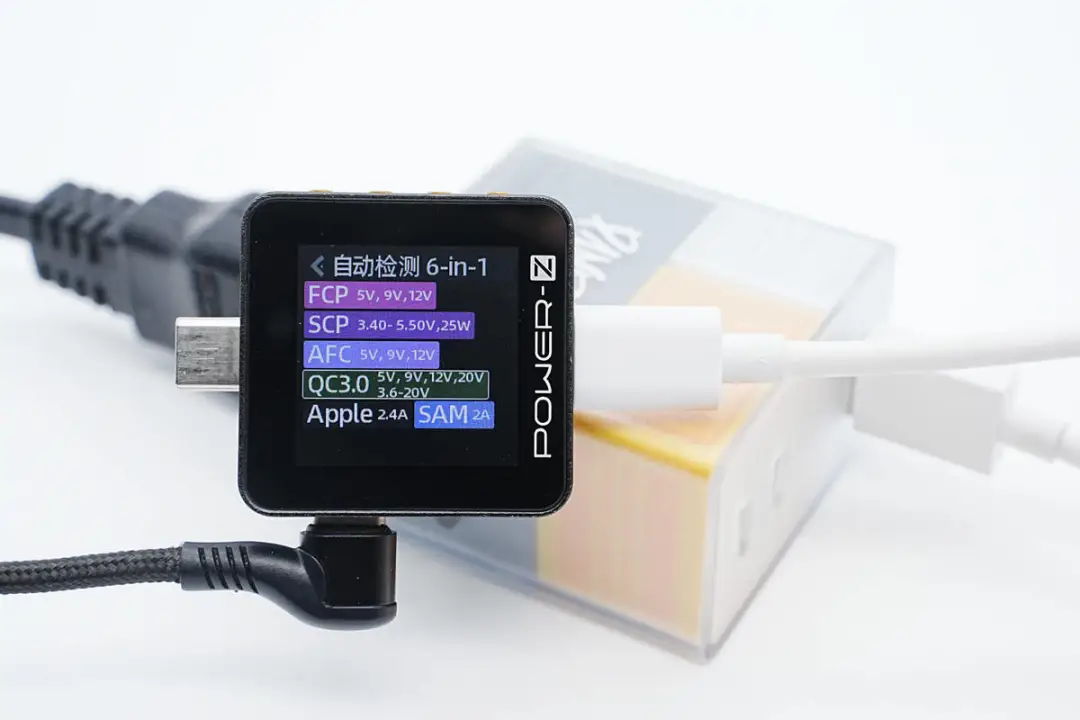
It was measured that the USB-A port supports fast charging protocols such as FCP, SCP, AFC and QC3.0.
Disassembly of PANDAER 65W Gallium nitride Charger
After having a basic understanding of the Meizu PANDAER 65W gallium nitride charger, let's continue to disassemble it and take a look at the detailed internal design.
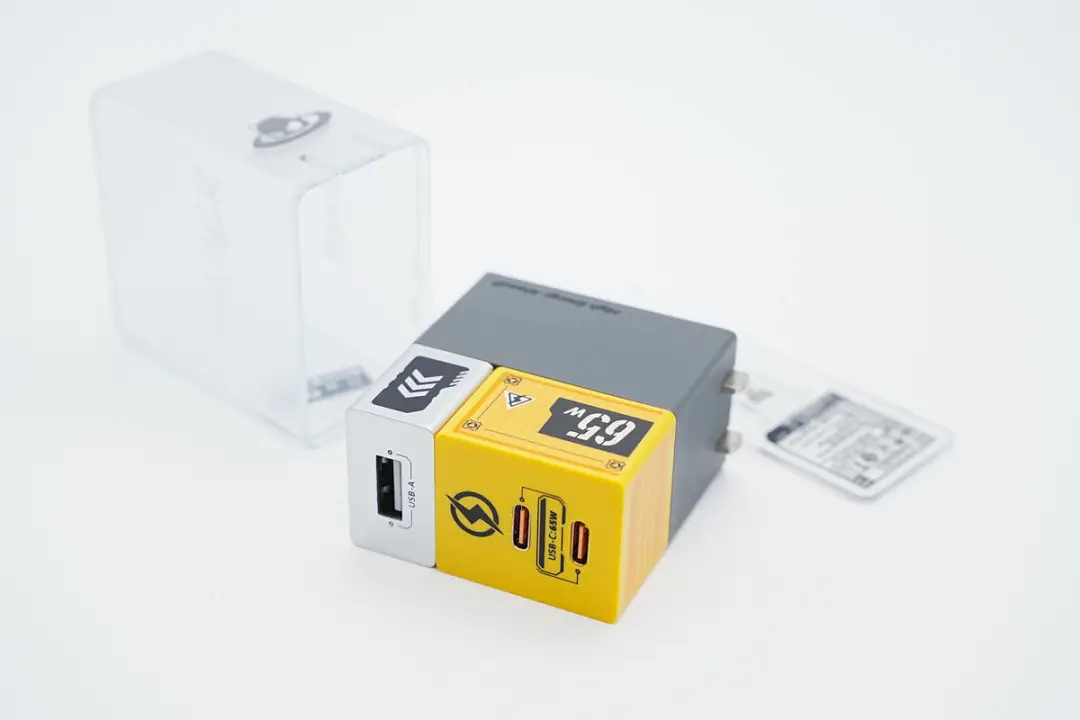
Disassemble the charger shell along the seam of the charger shell. Inside the transparent charger shell, there are three-color modules spliced together.
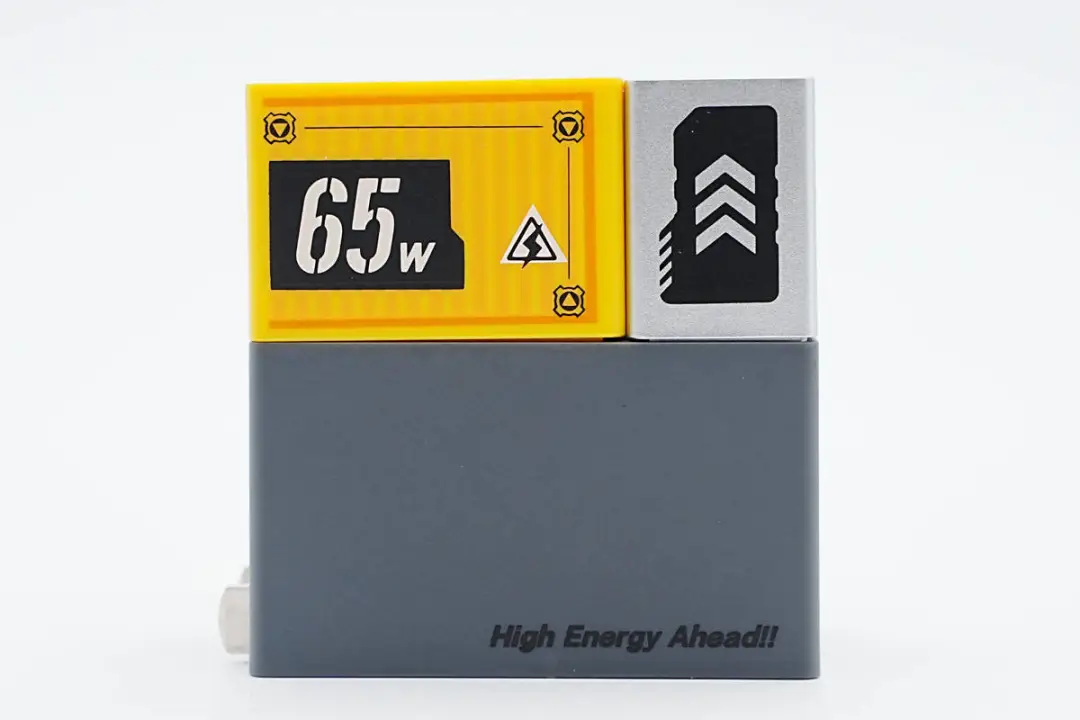
A look at the inner shell of the charger. It still looks like a complete charger.

The shells of different colors are joined together to form a whole.
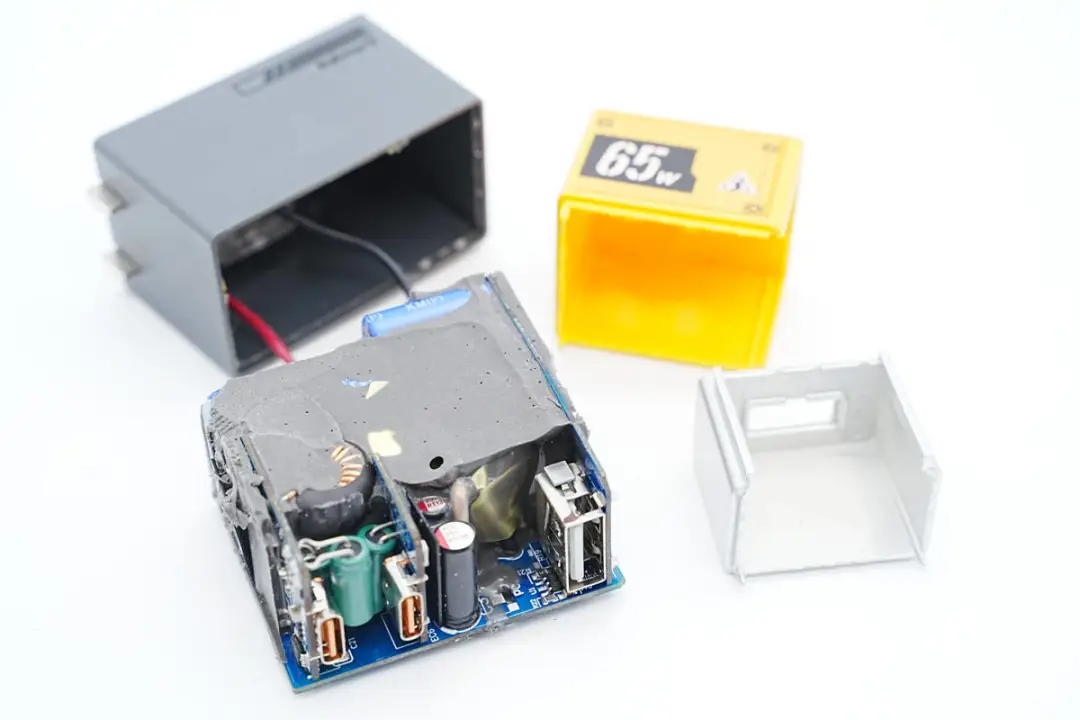
Disassemble the casing and take out the PCBA module inside the charger. The PCBA module is made with potting technology, which can achieve better heat dissipation effect, strength and weather resistance, and extend the service life of the charger.
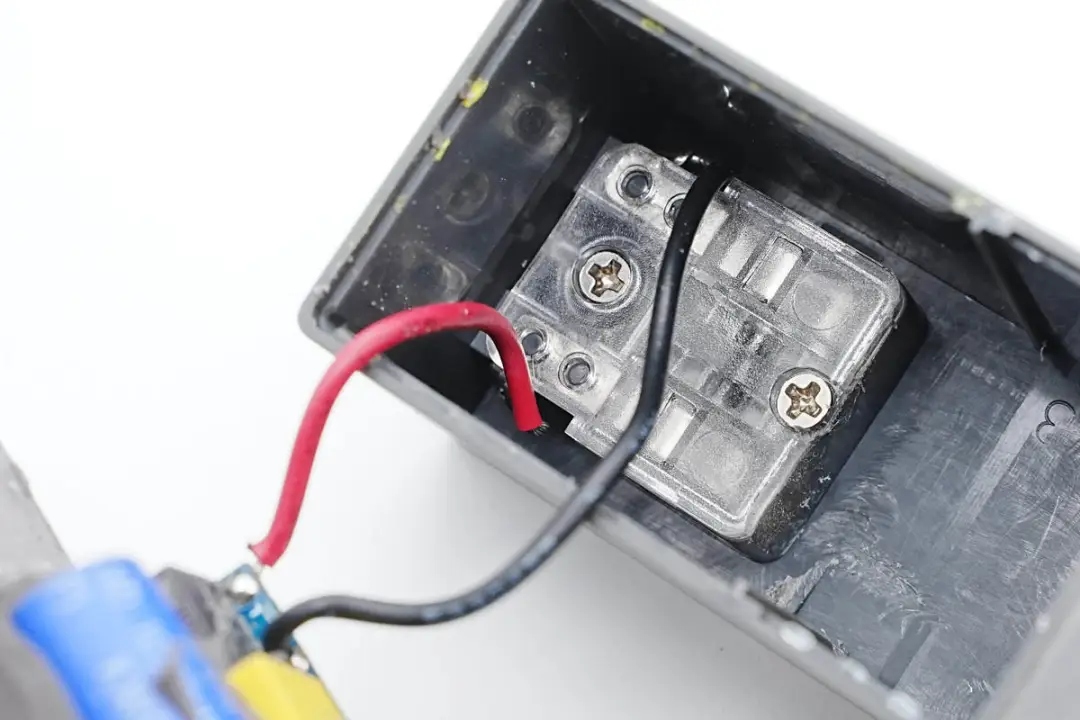
The folding pins of the charger are fixed with transparent plastic covers.

The AC input wires are connected by welding.
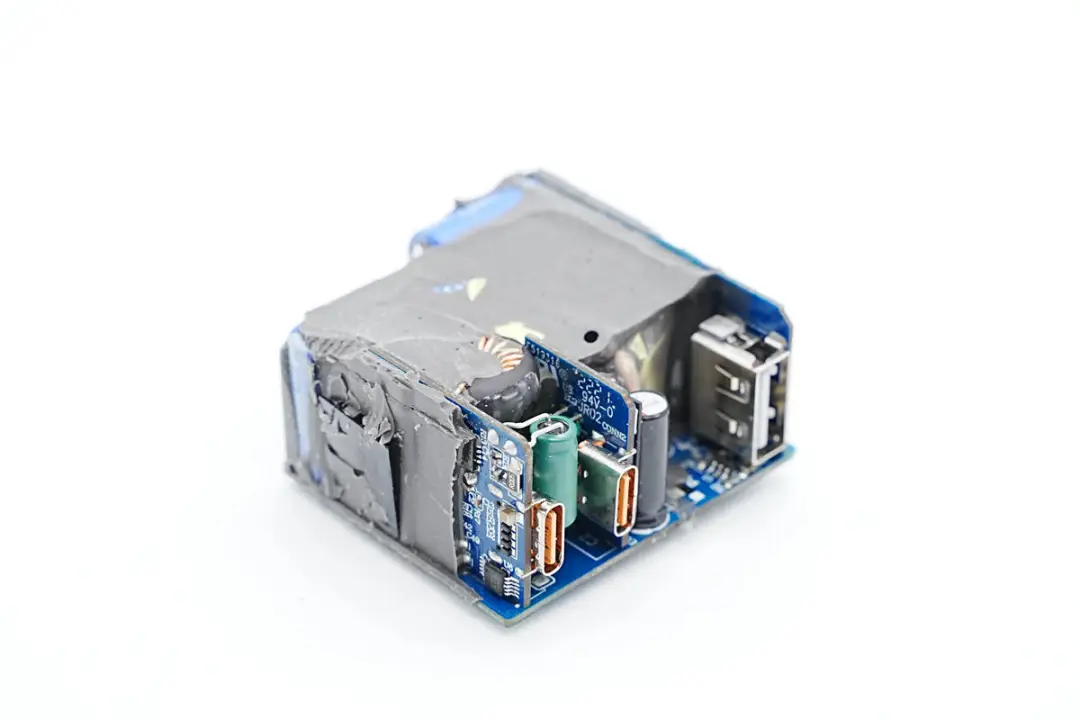
The charger PCBA module is composed of multiple small boards welded together, making full use of space and reducing volume.
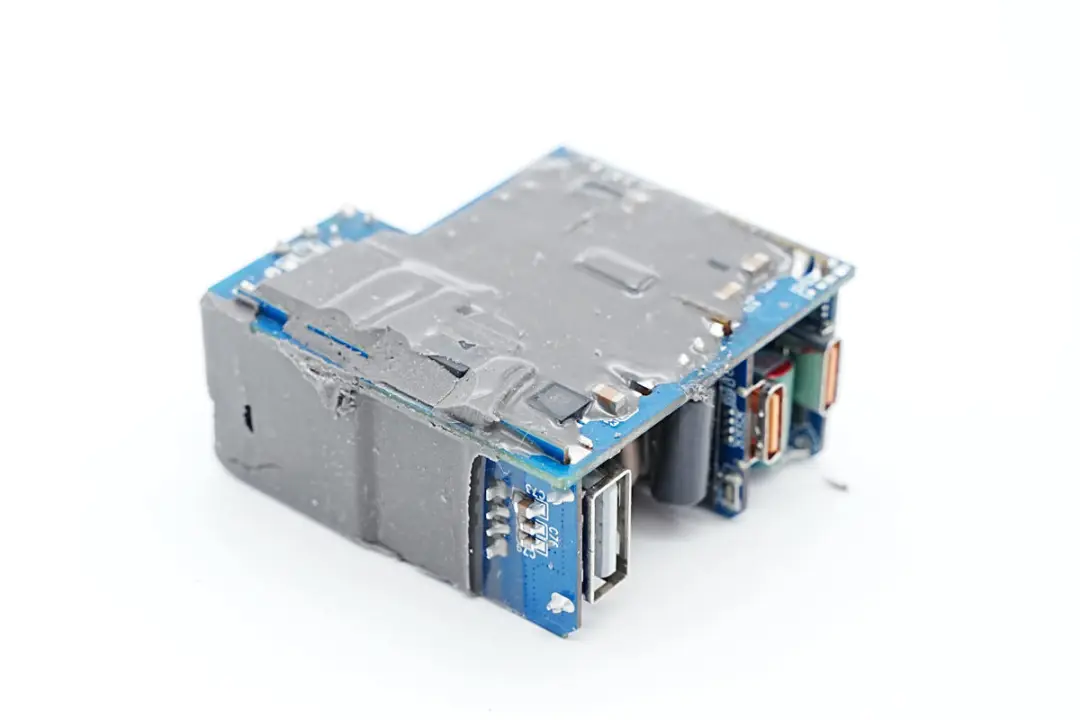
The back of the PCBA is also covered with thermal conductive adhesive to dissipate heat from the heat-generating components.

The length of the PCBA module was measured to be approximately 47.93mm using a vernier caliper.

The width of the PCBA module is approximately 46.35mm.
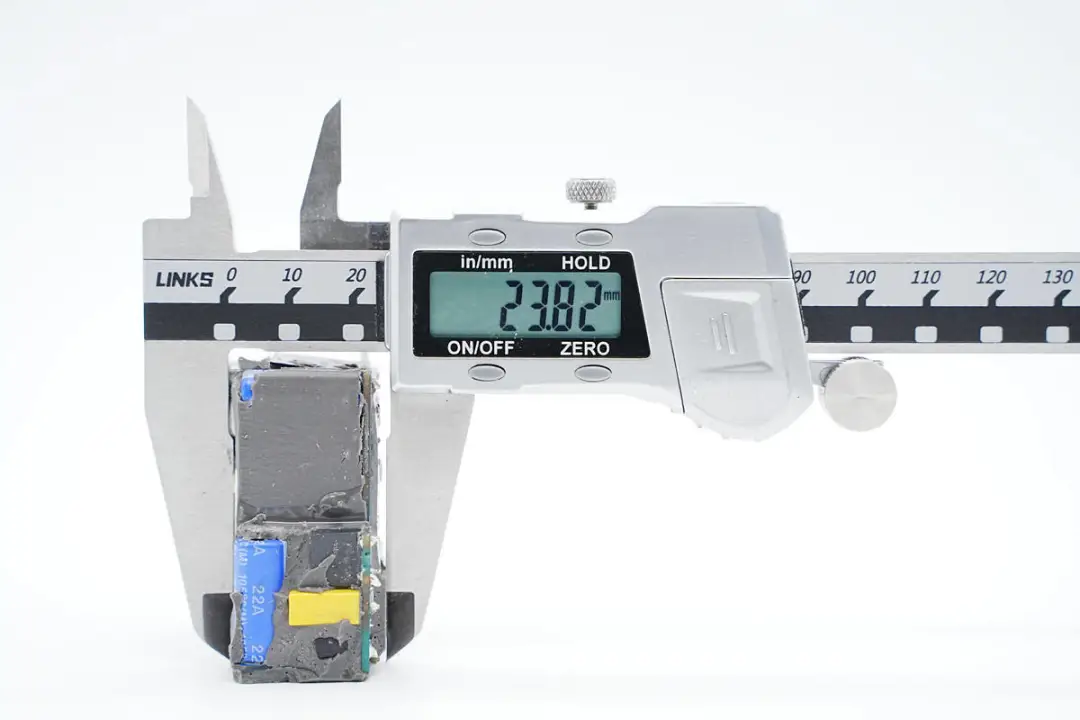
The thickness of the PCBA module is approximately 23.82mm.
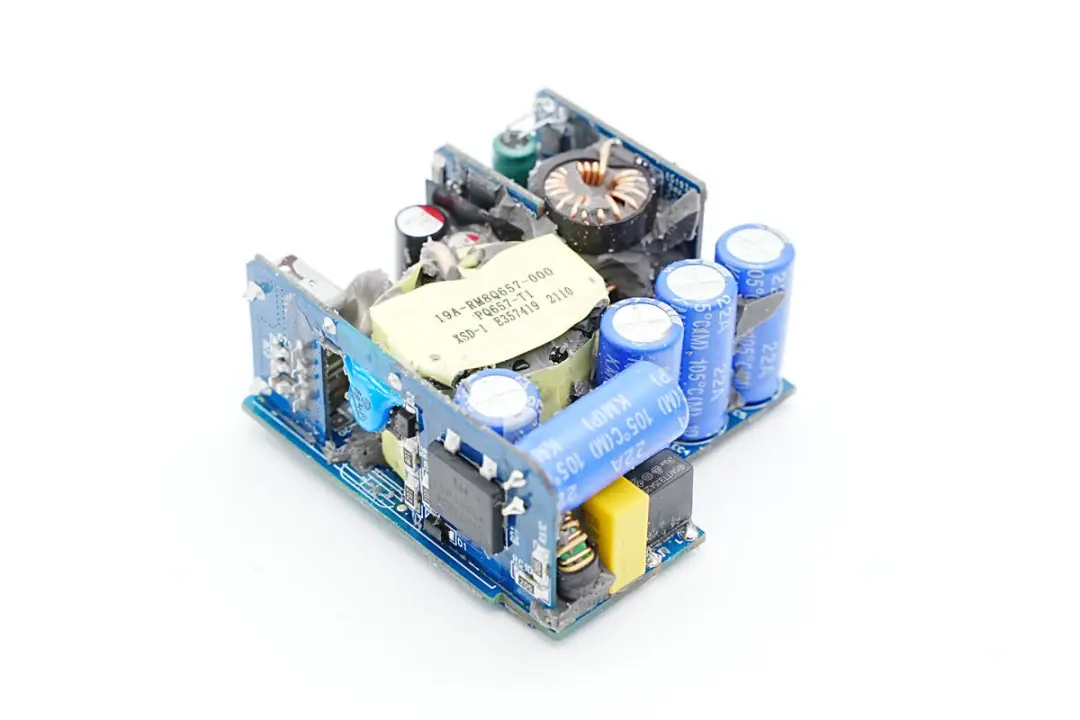
Remove the glue from the surface of the PCBA and start observing the internal components. Solder fuses, EMI filter circuits and high-voltage electrolytic capacitors at the input end of the charger. Solder rectifier Bridges and output USB-A female sockets on one side of the vertical small board.
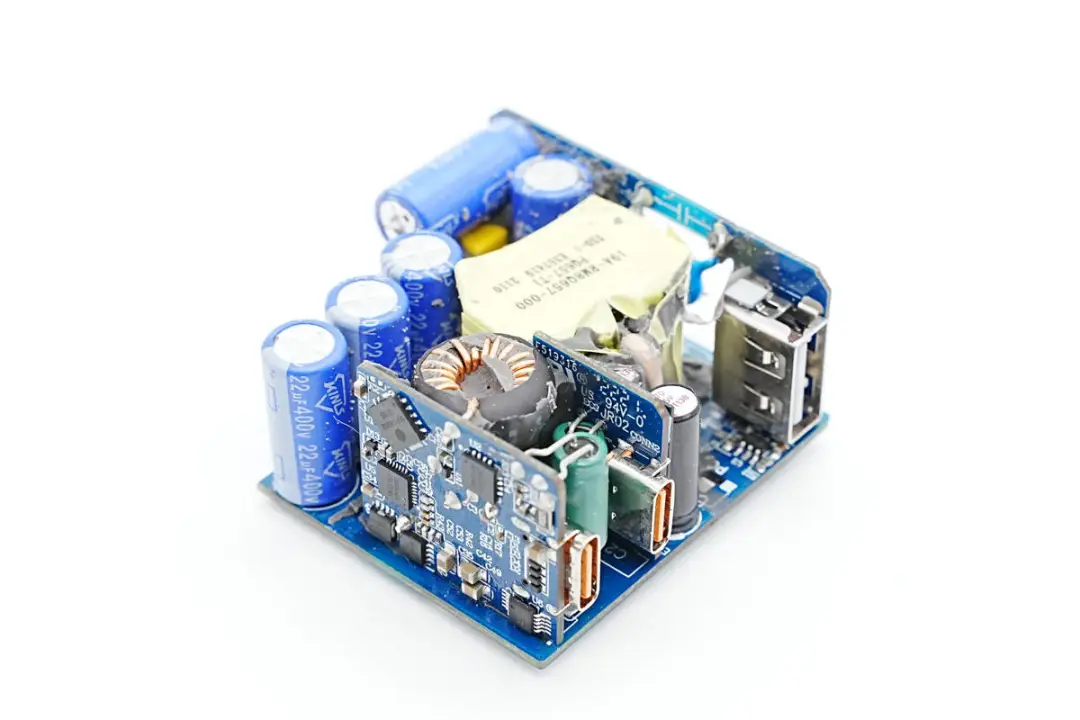
Two small boards are welded on the output side, and the USB-C female socket and the step-down circuit are welded.
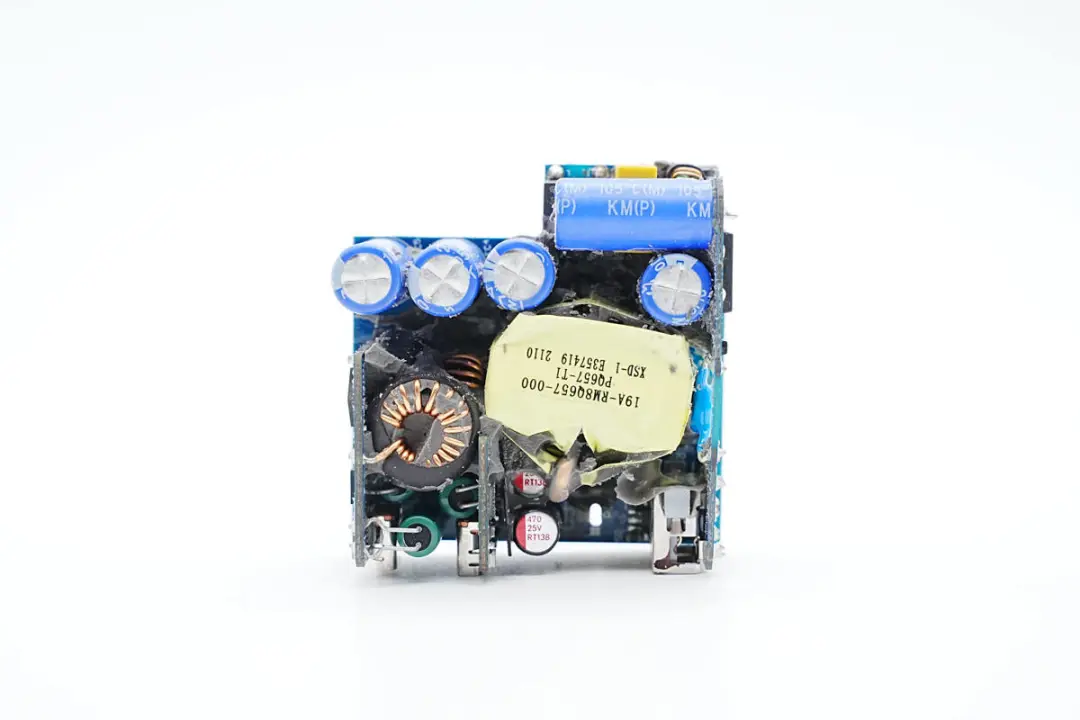
A view of the front of the PCBA module: A high-voltage filter capacitor is soldered on the top. Below the capacitor on the left side, a USB-C step-down small board is soldered, along with a step-down inductor and a filter capacitor, etc. On the right side, a transformer is soldered, and at the bottom of the transformer, a filter solid-state capacitor is also soldered.
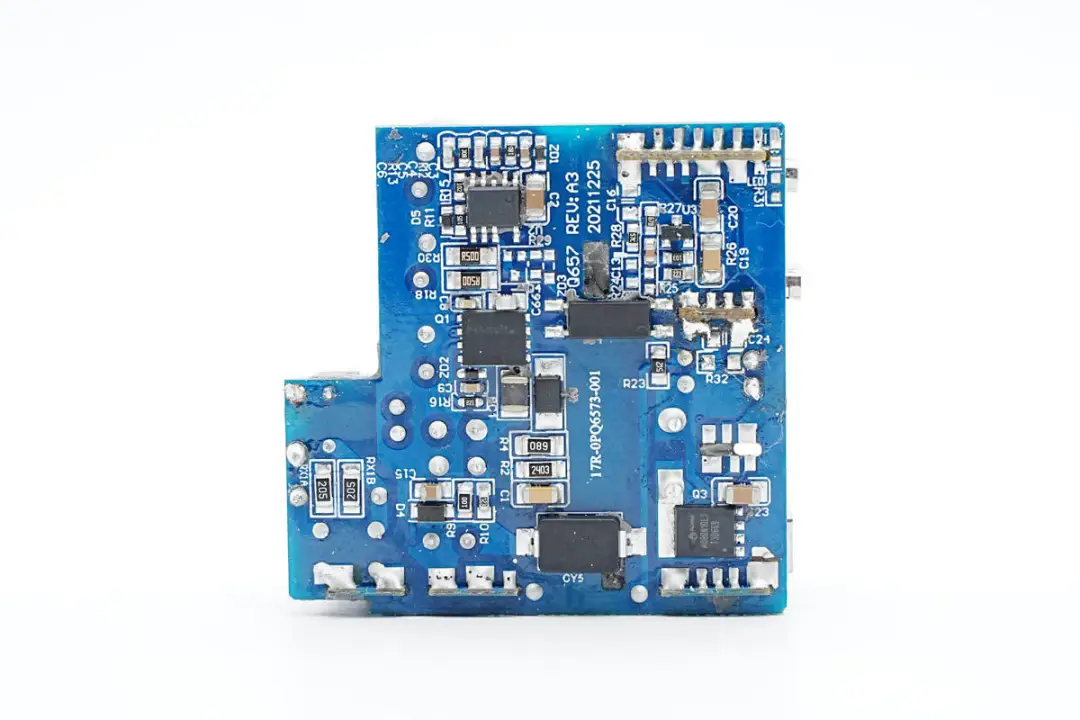
The back of the PCBA module is soldered with the primary main control chip, gallium nitride power chip, feedback optocoupler, surface mount Y capacitor and synchronous rectifier tube.
Through the observation of the PCBA module of the charger, it was found that the PANDAER 65W gallium nitride charger adopts a high-frequency QR switching power supply design. The primary part uses a flyback switching power supply combined with synchronous rectification and a fixed voltage output. The output adopts a secondary synchronous step-down circuit, achieving dual C-port 65W power blind insertion and multi-port power automatic distribution functions. Now, let's start to understand the design and materials of the entire charger from the input end.
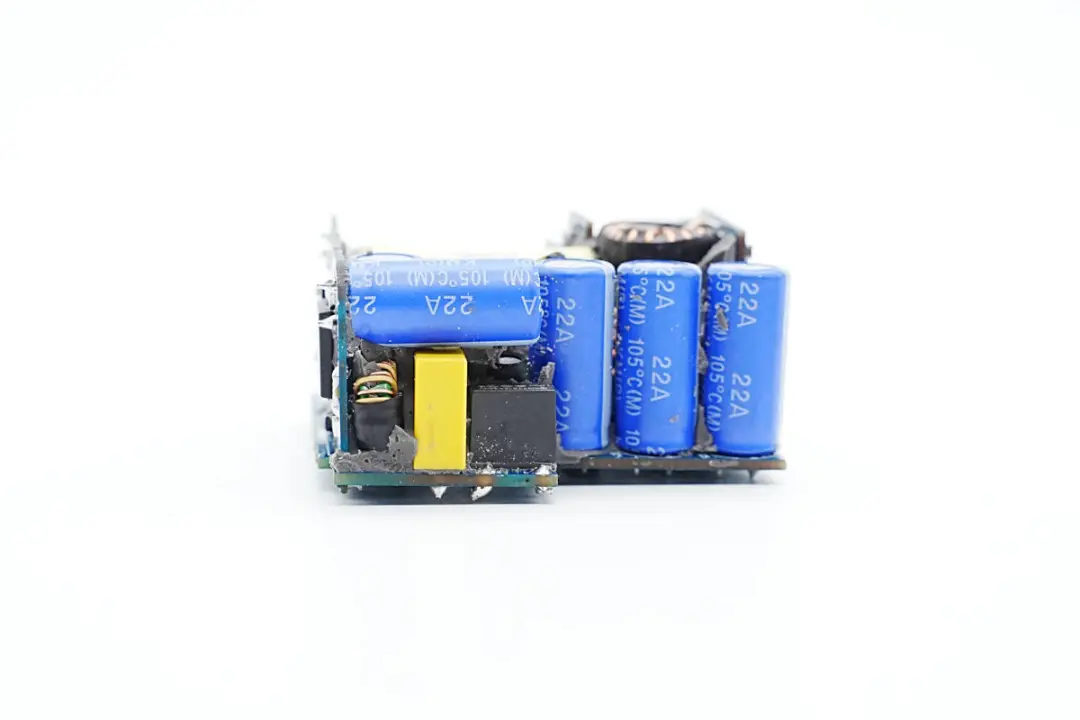
Solder a fuse, a safety X2 capacitor and a common mode inductor at the input end of the charger, and solder a rectifier bridge on the small board on the left.
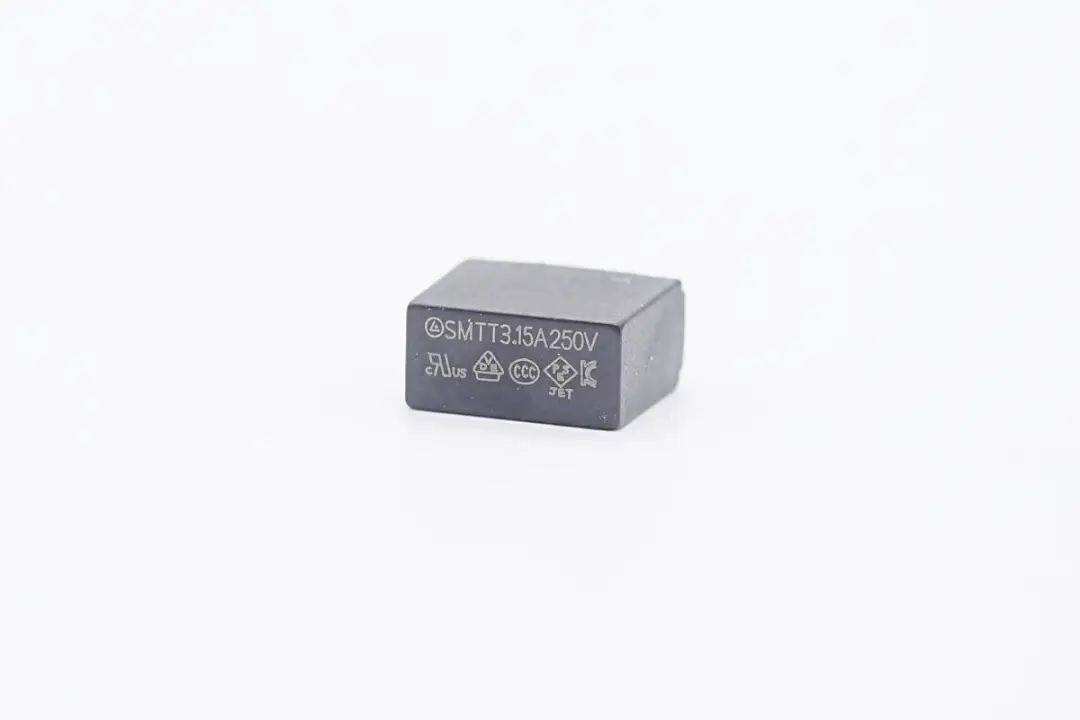
The specification of the input delay fuse is 3.15A 250V.
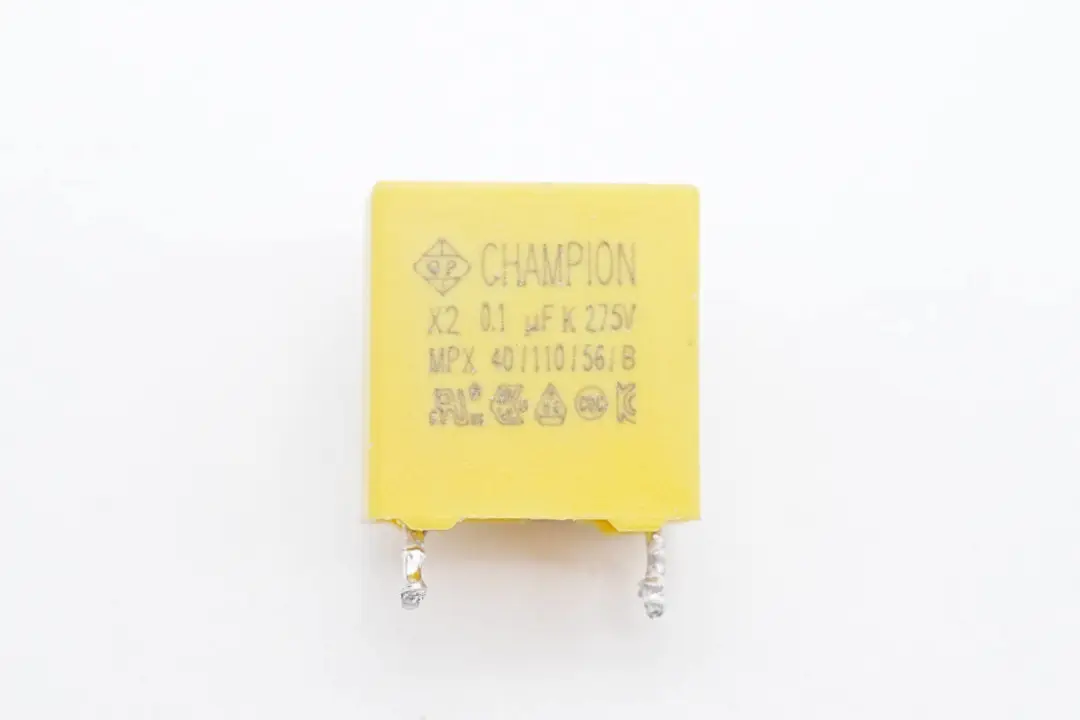
The safety standard X2 capacitor is from CHAMPION Quanpeng Electronics, with a specification of 0.1μF.
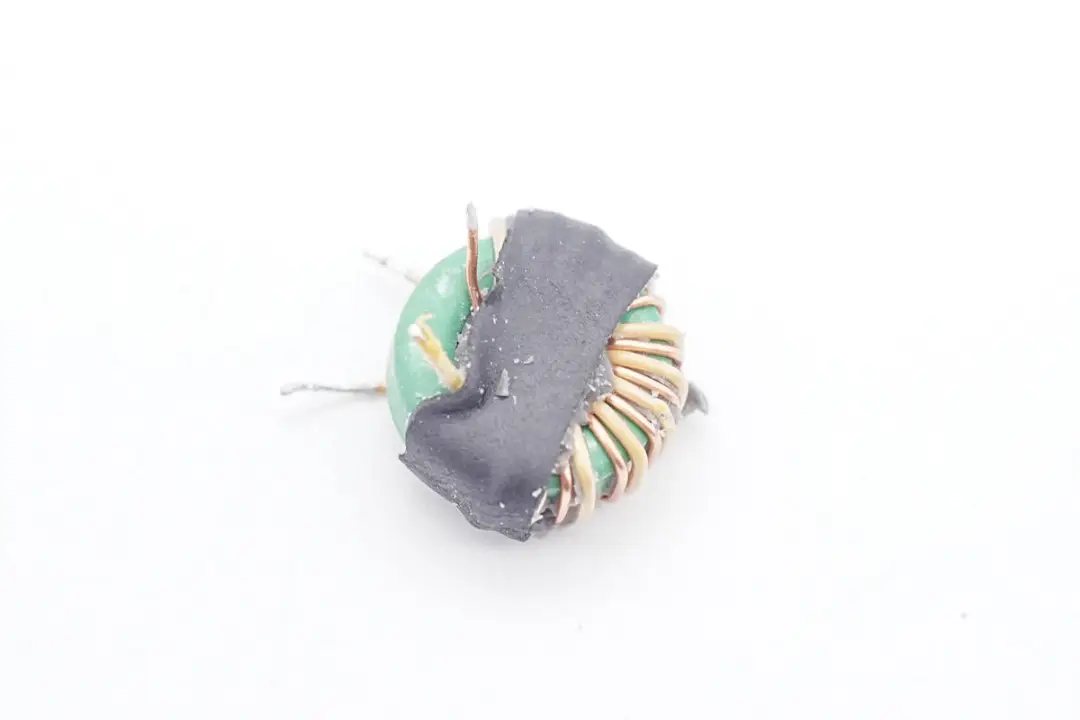
Common mode inductors are wound with insulated wires and enameled wires, and are insulated and fixed with heat shrink tubes on the outside.

The components of the rectifier bridge and the high-voltage starting circuit are welded to the back of the small board.
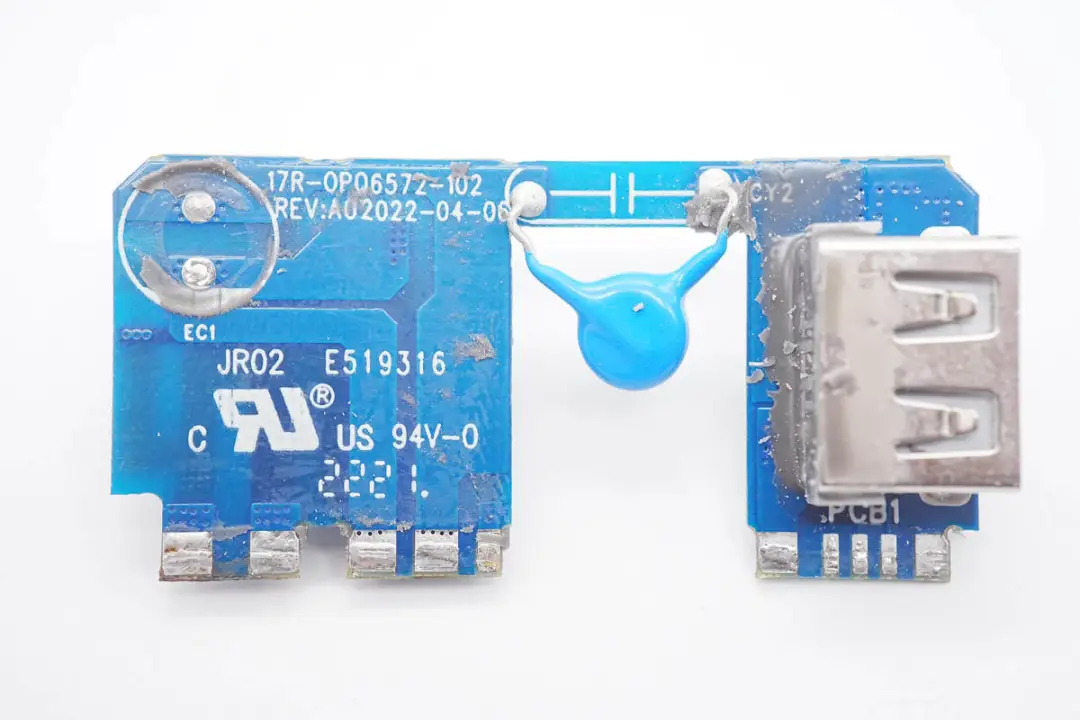
A high-voltage filter capacitor, a blue Y capacitor and a USB-A female socket are welded to the front of the small board.
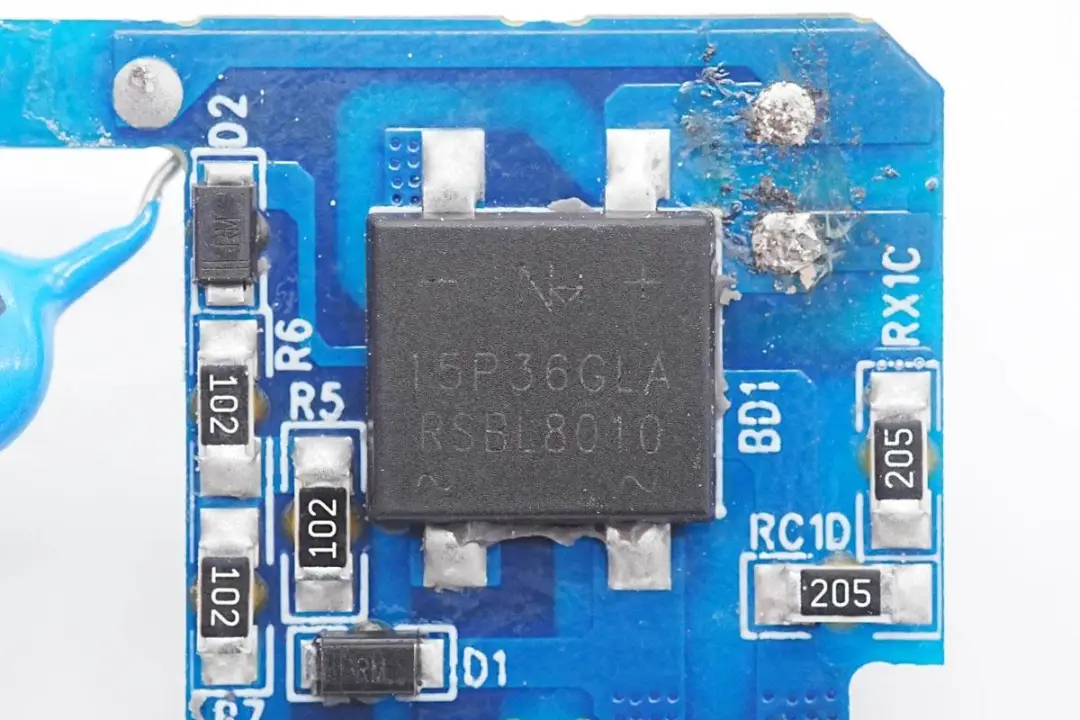
The surface mount rectifier bridge with silk-screen printing RSBL8010 is used to rectify alternating current into pulsating direct current.

The high-voltage filter capacitors are from sapphire, all with specifications of 22μF400V, and five of them have a total capacity of 110μF.
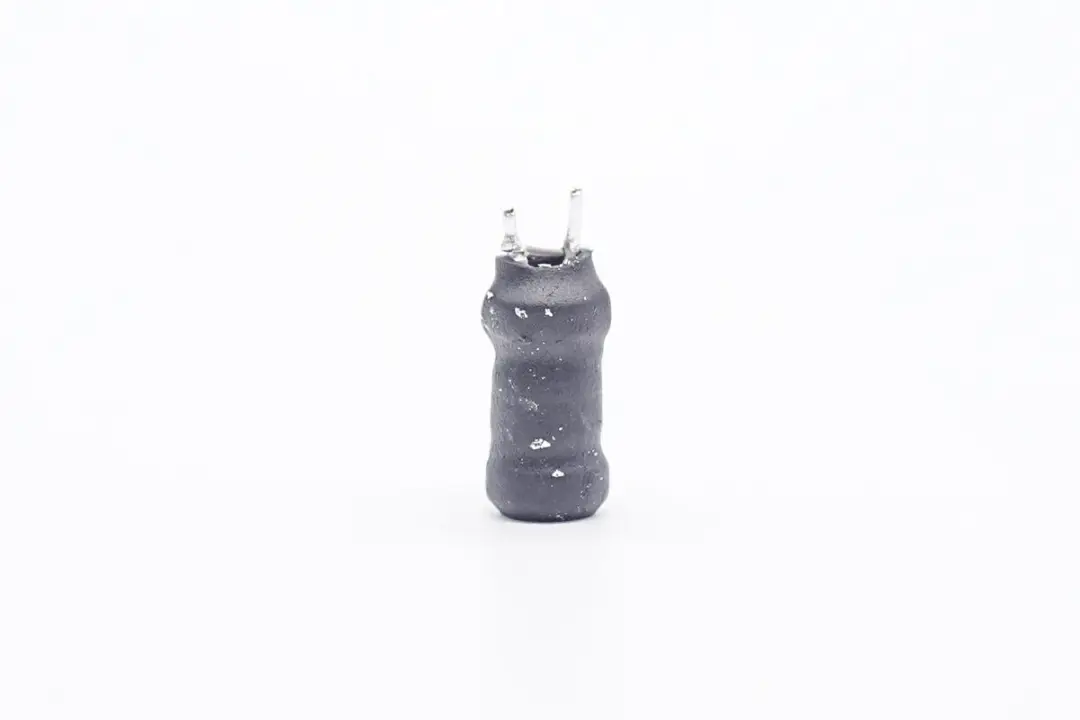
The differential mode inductor is wound with I-shaped magnetic cores and insulated with heat shrink tubing.

The main control chip adopts ON Semiconductor NCP1342, which is a high-frequency flyback quasi-resonant primary PWM controller. It features built-in active X2 capacitor discharge, support for wide-range Vcc power supply, support for external thermistors for overheat protection, and multiple comprehensive protection functions.
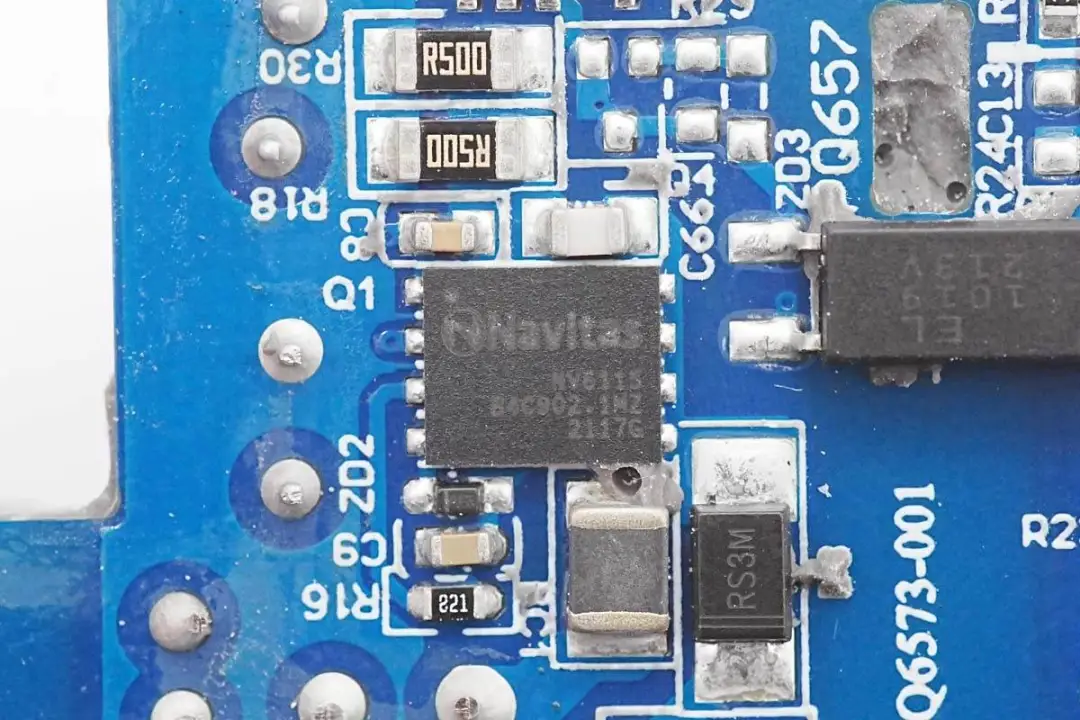
The primary switch tube adopts the Navitas NV6115 gallium nitride power chip, which is optimized for a high-frequency soft-switching topology. It is equipped with an independent driver and complex logic control circuits, supporting a wide range of logic signal input from 5 to 15V. It is equipped with a built-in gallium nitride switch tube with a resistance of 170mΩ and a withstand voltage of 650V, supporting a switching frequency of 2MHz. It adopts a 5*6mm QFN package, saving space. Nanomicro has achieved a highly integrated and reliable gallium nitride power chip design by integrating the driver, gallium nitride switch tube and logic circuit in a single package.
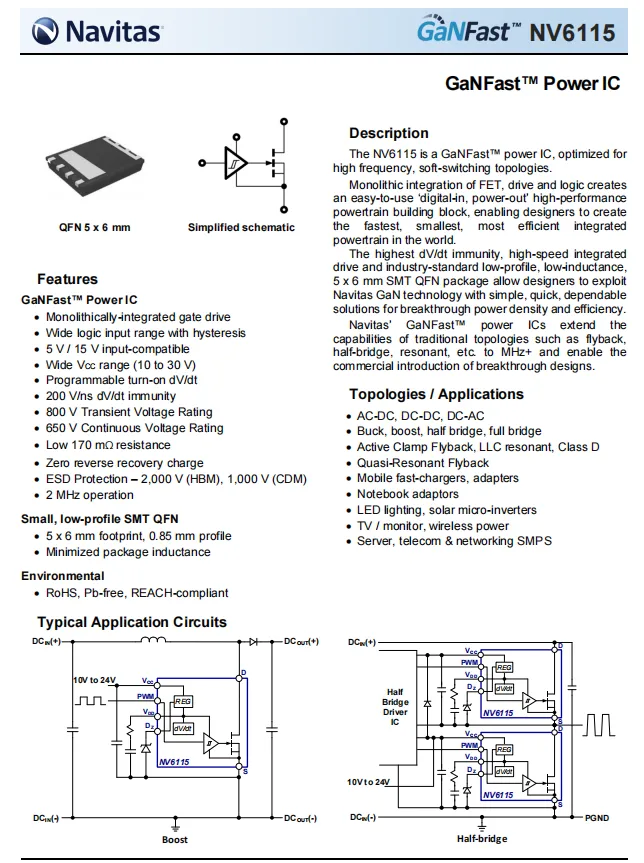
Detailed information of Nanomicro Semiconductor NV6115.
Charging Head Network has learned through disassembly that Nanomicro's GaNFast power chip has previously been used in OPPO's 50W cookie gan fast charger, RAVPOWER's 65W 1A1C gan fast charger, Xiaomi's 65W USB PD GAN charger, SlimQ's 65W gan USB PD fast charger 1A1C, and Anker Products such as PowerCore Fusion PD ultra-fast Charger, RAVPower 45W GaN PD charger, Bass 65W gallium nitride Charger, and ROxANNE 66W Gallium nitride USB PD dual-port fast charger have been adopted and highly recognized by the market.
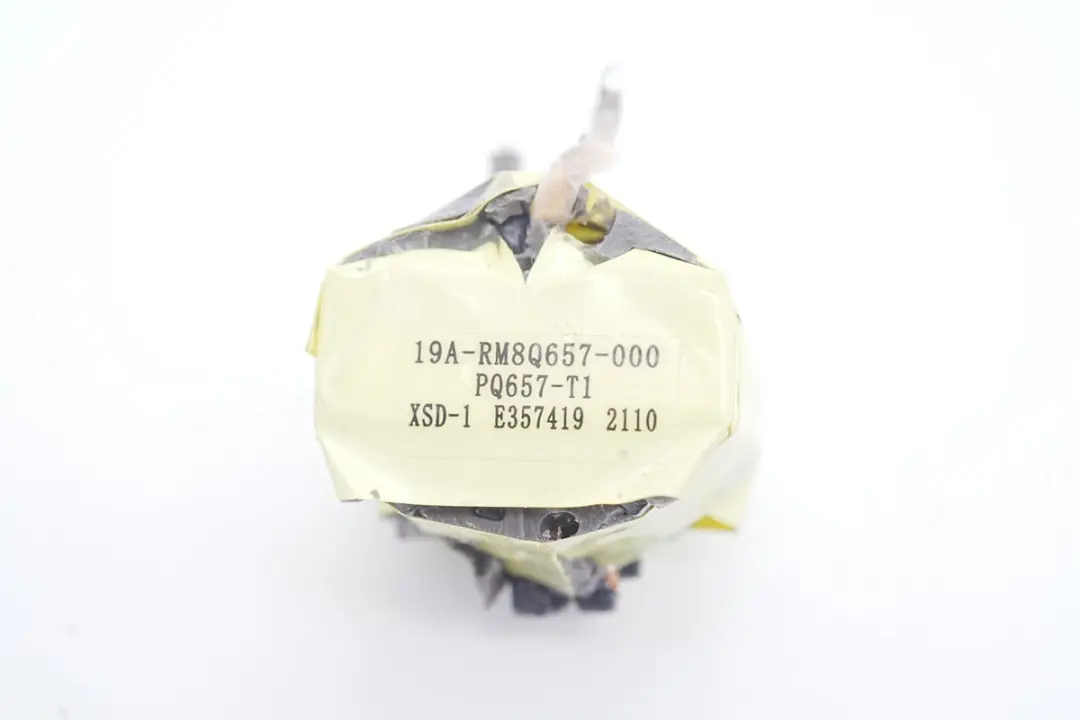
The transformer core is tightly wrapped and insulated with adhesive tape, and the output is wound with multiple layers of insulated wires.

The surface mount Y capacitors are from Sichuan Terui Xiang Technology Co., LTD. They feature small size and light weight, making them highly suitable for application in high-density power supply products such as gallium nitride fast charging. The material number is TMY1471K.
Trelight is dedicated to the research and development, production and sales of passive components, with a registered capital of 100 million yuan. It has two self-owned capacitor brands: SMD TRX and DIP TY capacitors. TRX will be committed to the research of ceramic materials to expand the application of more categories and provide more solutions for customers.

Charging Head Network has learned that In addition to being used in dozens of high-power chargers such as the 100W gallium nitride fast charger certified by Bex Qualcomm QC5, the 100W gallium nitride charger from Meiduoduo, the 65W Super Flash Charge gallium nitride charger from OPPO, the 90W gallium nitride fast charger from Lenovo, the 65W gallium nitride charger from Nubia, and the 120W gallium nitride + silicon carbide PD fast charger from Bex It can also be applied to 20W mini fast charging devices of brands such as Hailutong, First Guard, and Belkin, and its performance has been unanimously recognized by customers.
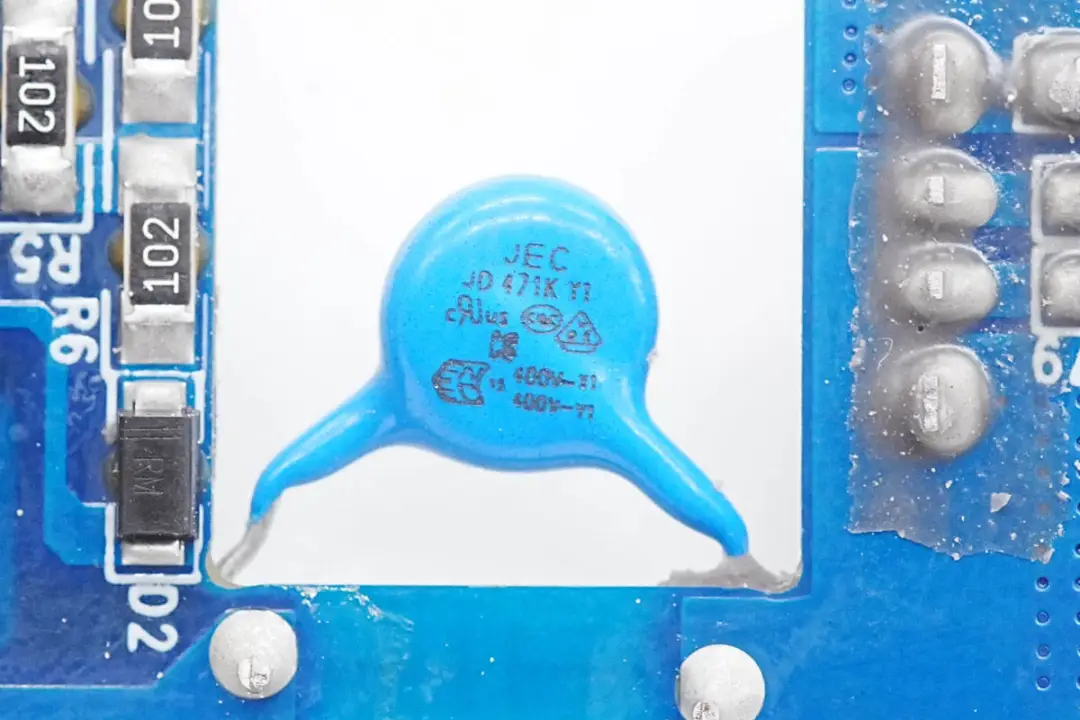
Another blue Y capacitor is from JEC Zhixu Electronics.
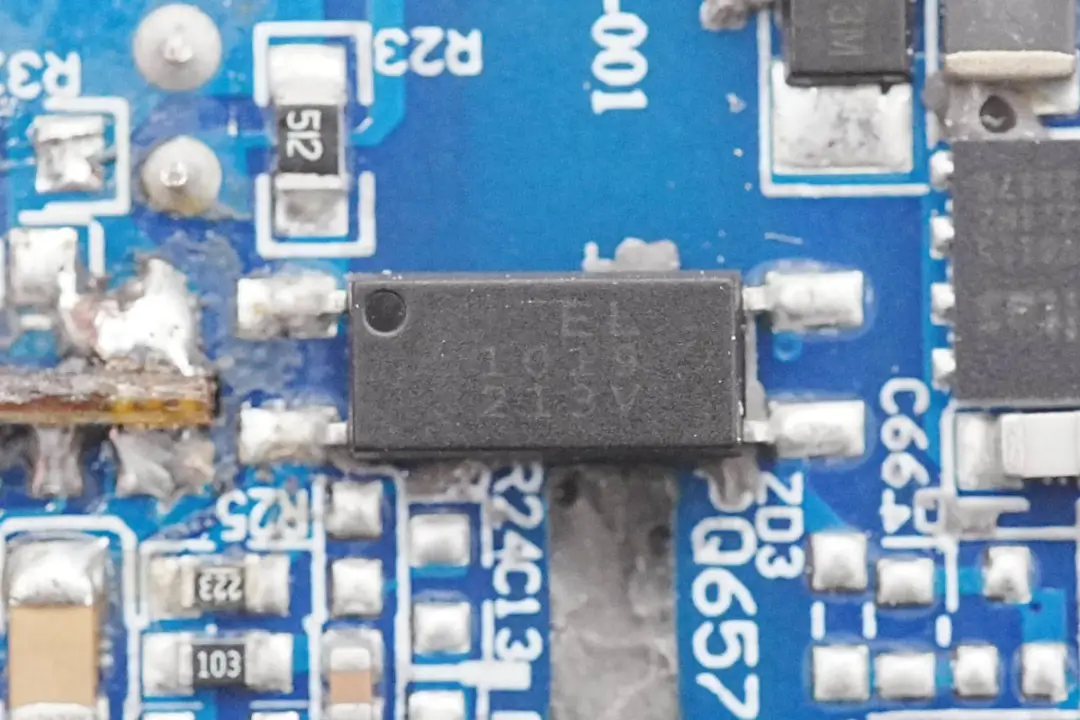
The EL1019 optocoupler is used for output voltage feedback.

The synchronous rectifier controller is silk-screened IBHJN, with the actual model being MP6908A, from MPS Xinyuan Semiconductor, and its maximum operating frequency is 600KHz. It supports multiple working modes such as DCM, CCM, QR, and ACF, and is compatible with both high-side and low-side applications. It also features a ringing detection function to prevent accidental activation.
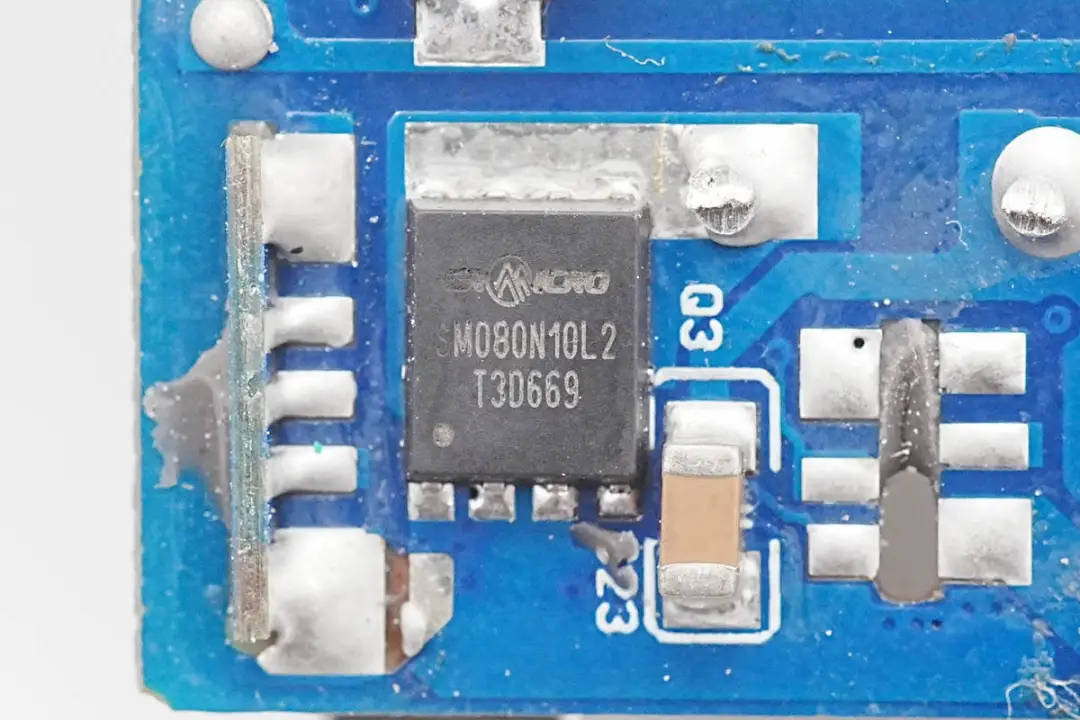
The synchronous rectifier tube is from China Resources Microelectronics, with the model number CRSM080N10L2. It is an NMOS with a withstand voltage of 100V and a conductivity of 6.8mΩ, and is packaged in DFN5*6.
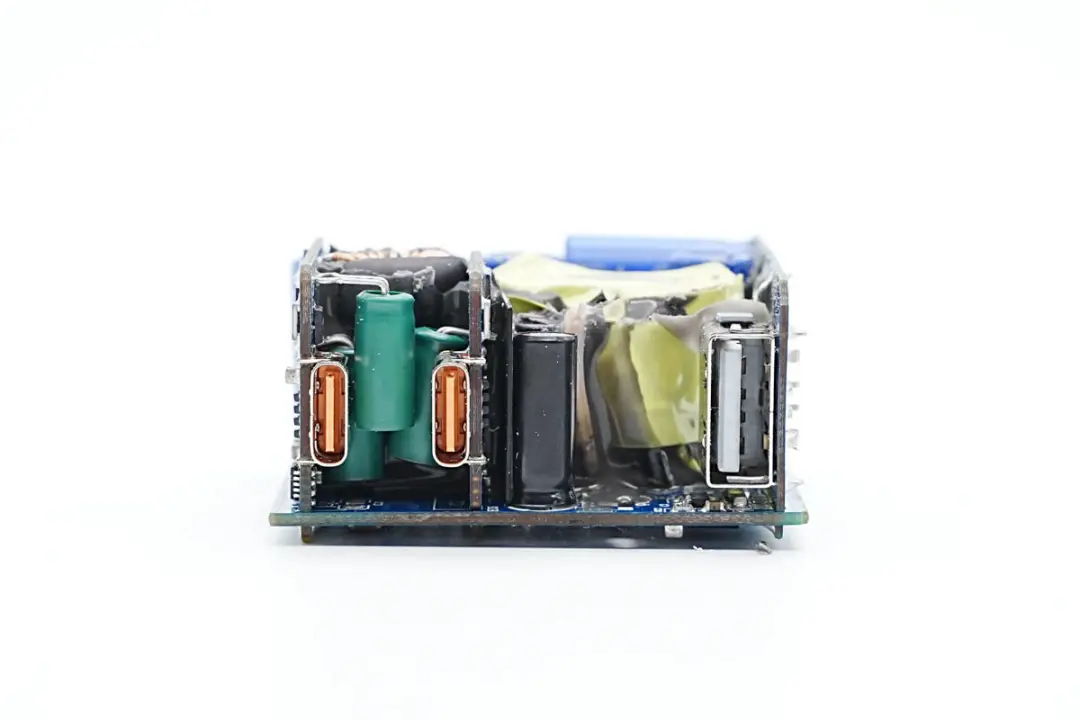
Two small boards at the output end are soldered with a step-down circuit, a filter capacitor and a USB-C female socket, while the right small board is soldered with a USB-A female socket.

The two filter capacitors in the secondary output circuit are both from PolyCap, which are RT series solid-state capacitors with dimensions of 6.3*14mm. Their slender size is highly suitable for compact fast-charging PCB designs, with a specification of 470μF 25V, providing a smooth DC voltage for the Vbus main circuit.
Charging Head Network disassembled and learned that the products of Boruikai are widely used in chargers, car chargers, wireless chargers, power banks, energy storage power supplies and other fields, and have been adopted by many products of well-known brands such as OPPO, vivo, Xiaomi, Honor, Samsung, Huawei, Lenovo, Zmi, Nubia, Gongniu and ANKER. The products have been highly recognized by the market.

The other filter capacitor has the same specification, both being 470μF 25V from PolyCap. The capacitor is insulated by a heat shrink tube on the outside. The two are connected in parallel for output filtering.
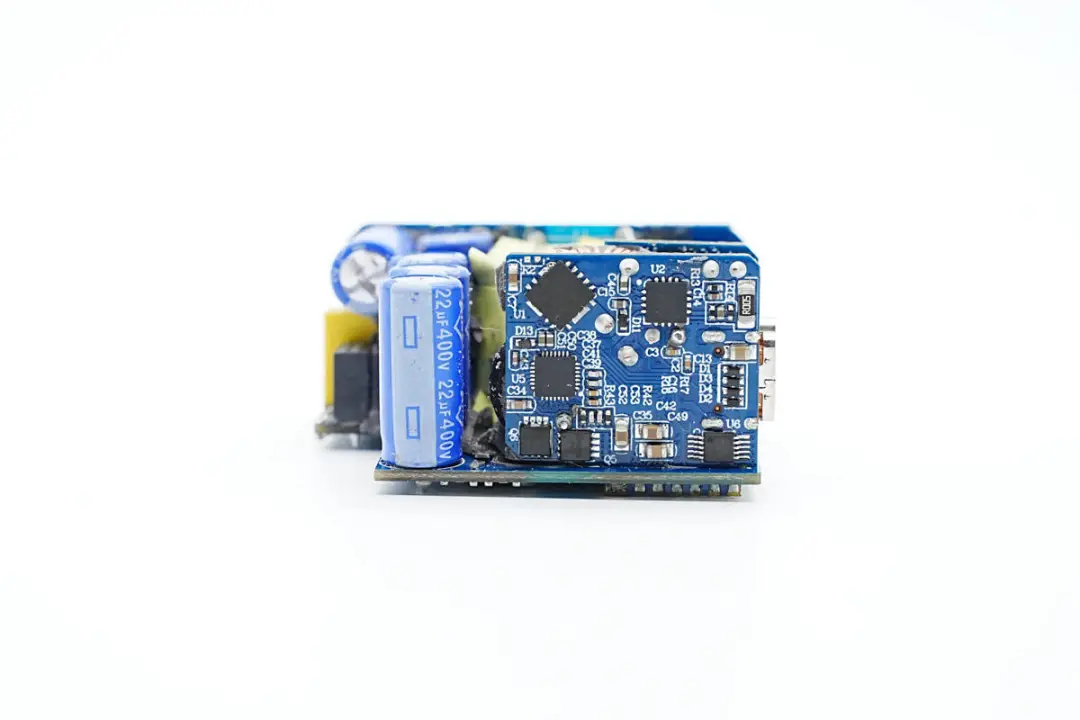
A side view of the charger PCBA module shows that the step-down converter and protocol chip and other components are soldered on the step-down small board.

A view of the back of the step-down small board, with a welded synchronous step-down converter, protocol chip, step-down chip and a single-chip microcomputer for automatic power distribution at the interface.
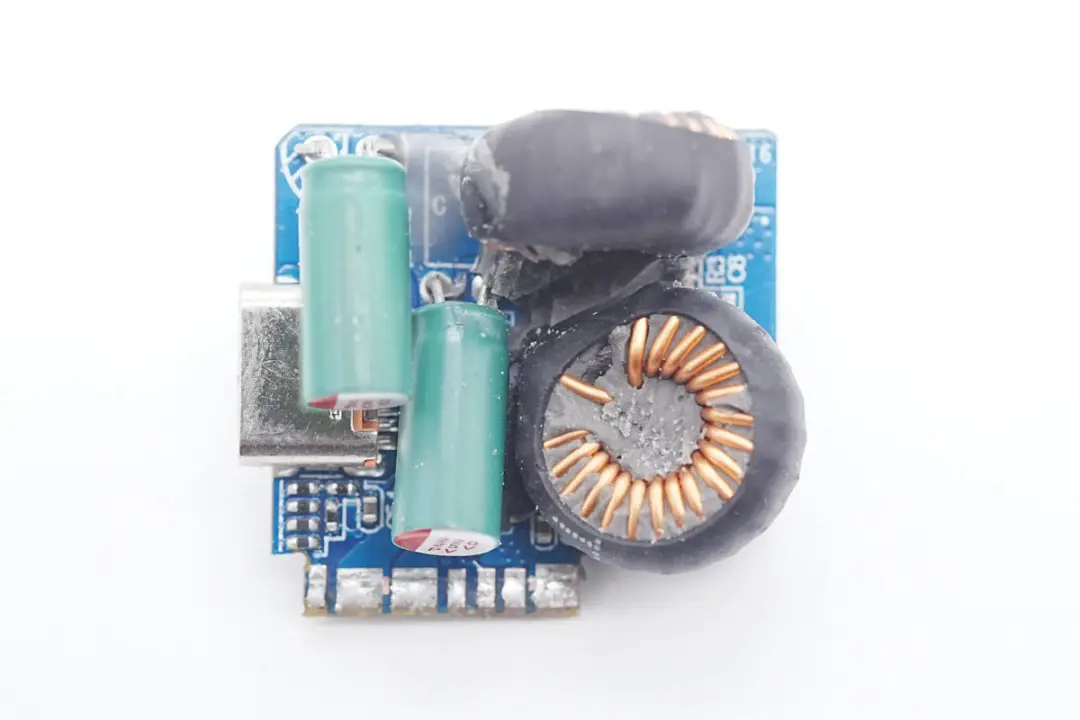
Two filter capacitors and two step-down inductors are welded to the front of the small board. Both the capacitors and inductors are insulated by heat shrink tubing.
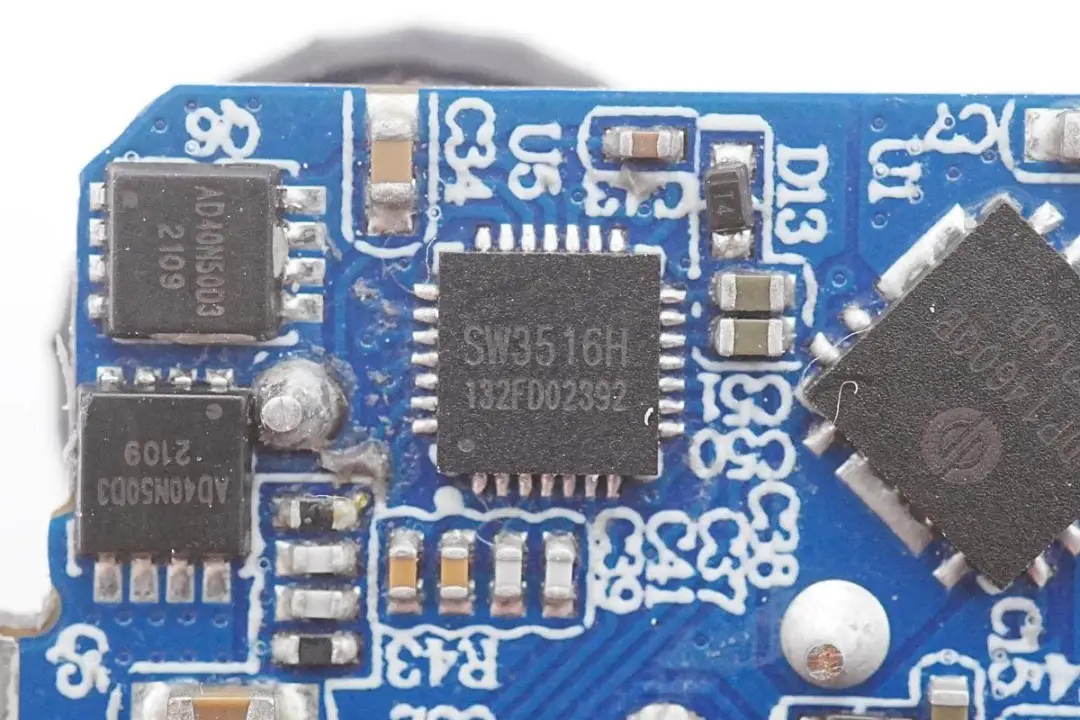
The main control chip of the step-down circuit at the USB-C port all adopts Zhirong SW3516H, which is used for step-down control and protocol recognition. The Zhirong SW3516H is A highly integrated multi-fast charging protocol dual-port charging chip that supports fast charging output from either A+C port and independent current limiting for both ports.
The SW3516H integrates a 5A high-efficiency synchronous step-down converter. Support AFC/FCP of PPS/PD/QC / / SCP/PE/SFCP wait for a variety of quick charge agreement, maximum output PD 100 w, CC/CV mode, and the double management logic. Only a small number of peripheral components are needed to form a complete high-performance multi-fast charging protocol dual-port charging solution.
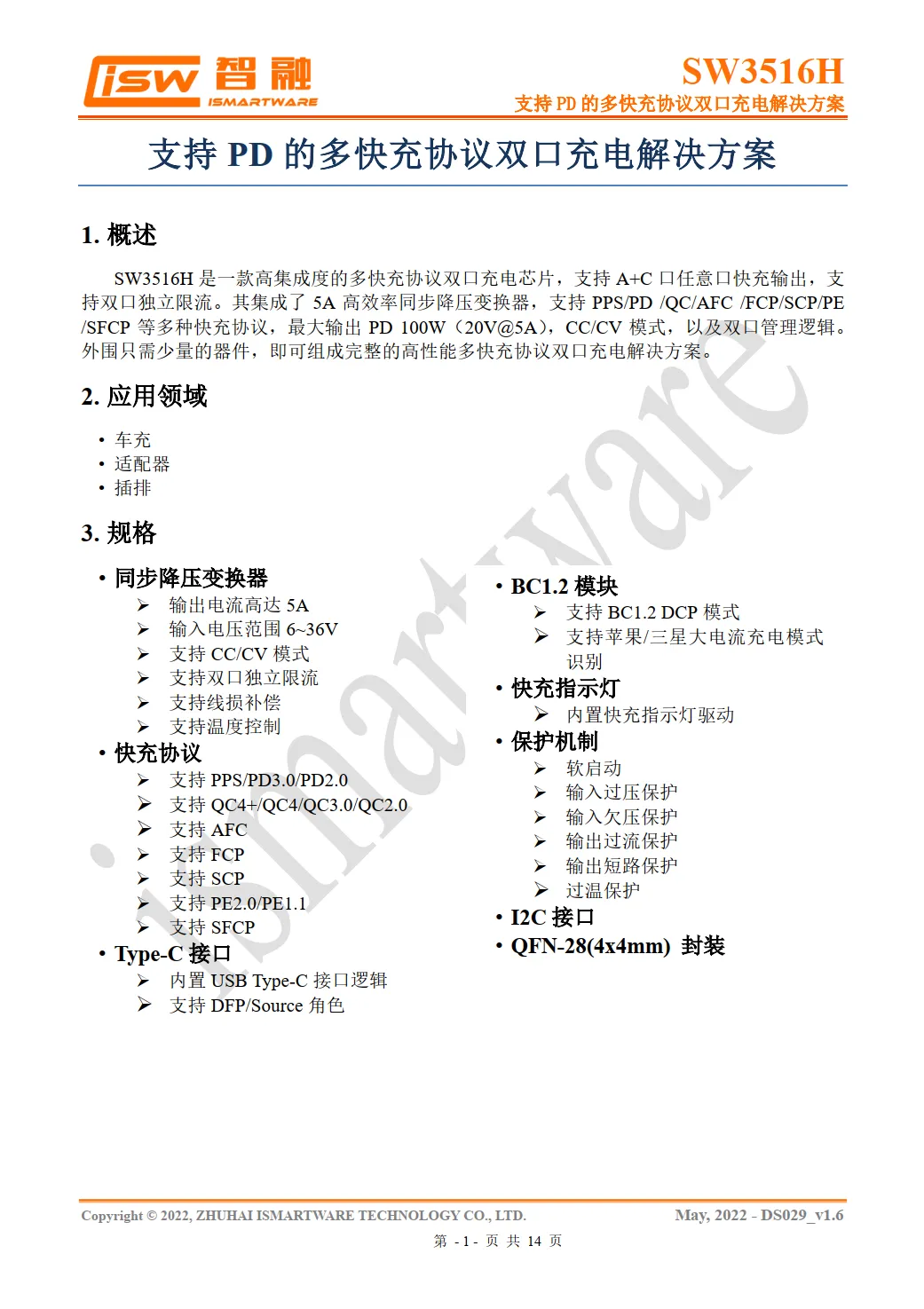
Charging Head Network found through disassembly that The SW3516H has also been adopted by multiple products such as ASUS 65W 2C1A GaN charger, Nubia 65W Deuterium Peak three-port gan fast charger, Rapoo 65W GaN fast charger, UGREEN 65W 4C port gan fast charger, Lenovo 90W Flash Charging dual-port GAN charger, and Hongdashun 120W four-port 2C2A fast charger. In addition, Zhirong's fast charging chips can also be used in fields such as USB PD fast charging power banks and fast charging car chargers.
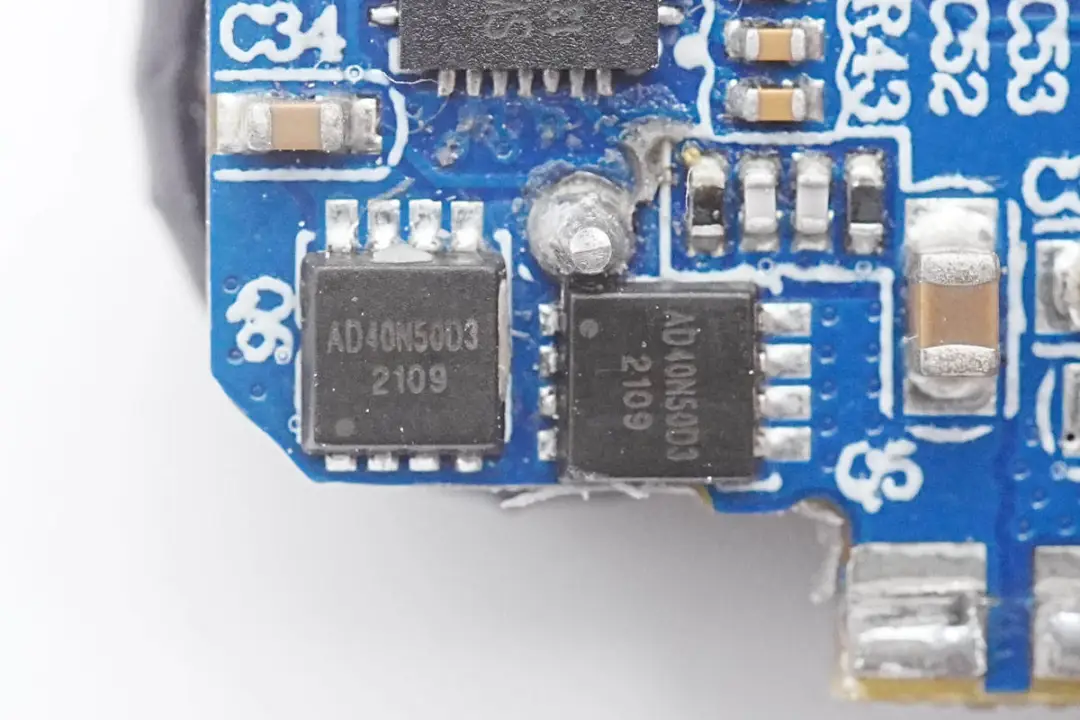
The two external step-down switch tubes of SW3516H are from Astatmann, model AD40N50D3, NMOS, with a withstand voltage of 40V, and are packaged in PPAK3*3.

Close-up of the step-down inductor, insulated with heat shrink tubing.
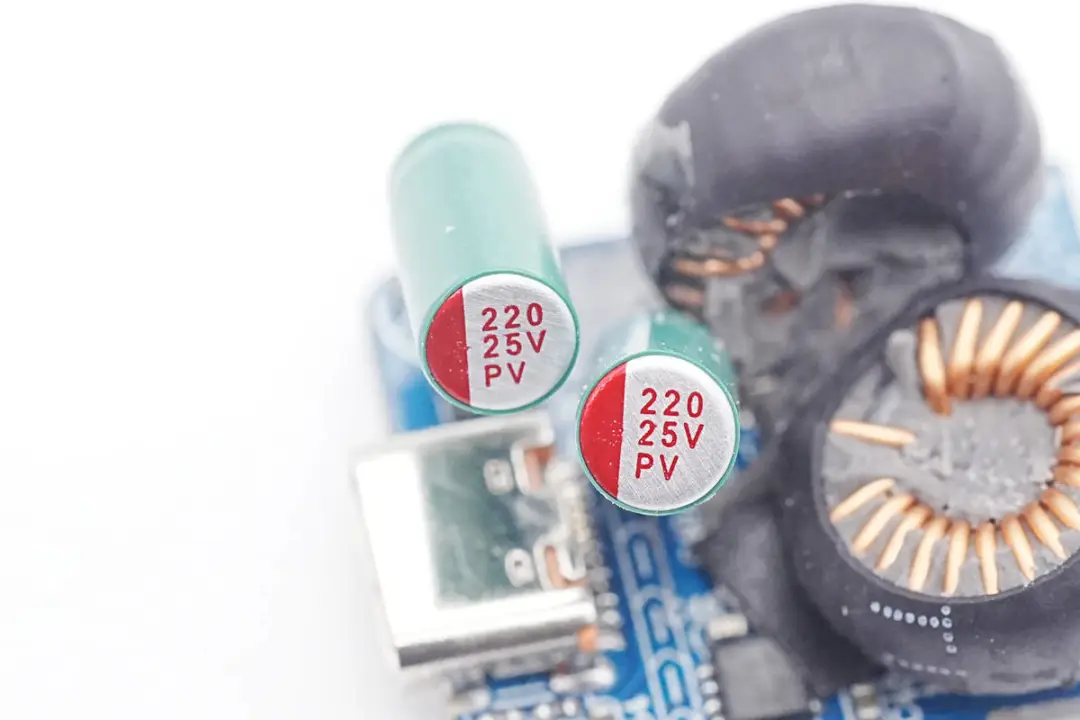
The output filter capacitor specification is 220μF 25V, from Shaoguan Fushida, and it is a PV series solid-state capacitor specifically designed for fast charging.
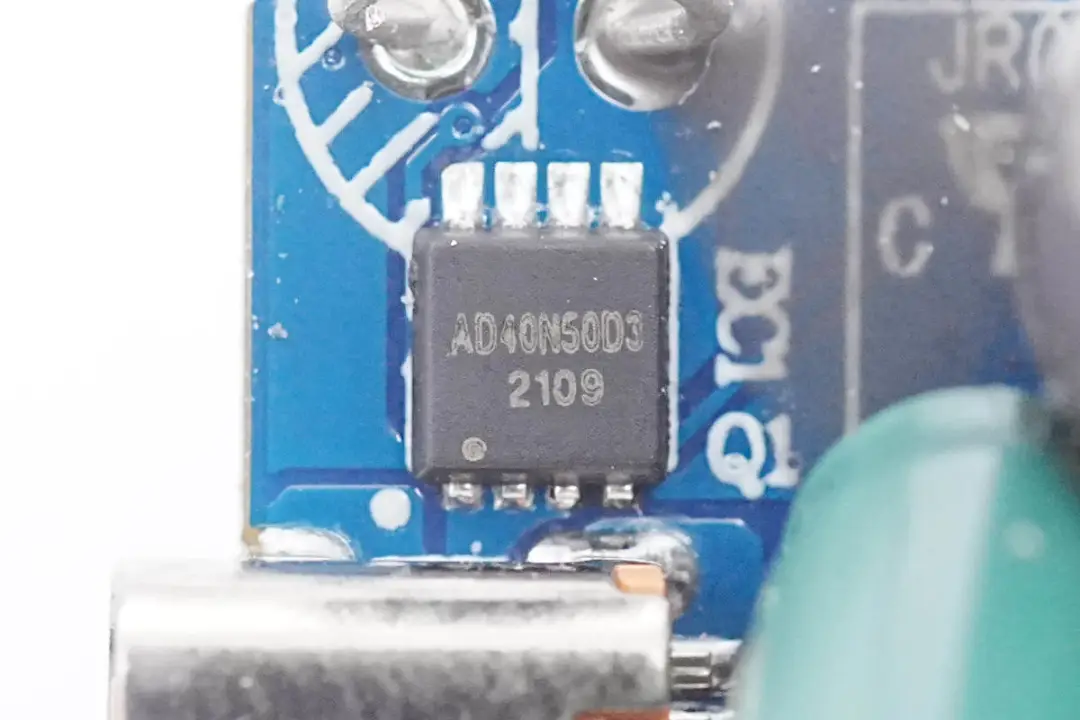
The VBUS switch tube used for USB-C interface output is of the same model as the synchronous step-down switch tube.

Another step-down circuit adopts the Xintan Micro NDP1460QB, which is a synchronous step-down converter with an input voltage of 38V and a continuous output current of 6A. It is equipped with a built-in 14mΩ synchronous step-down tube, supports dual-channel constant voltage and constant current control, and has built-in compensation components. It is packaged in a QFN5*5 package with enhanced heat dissipation.
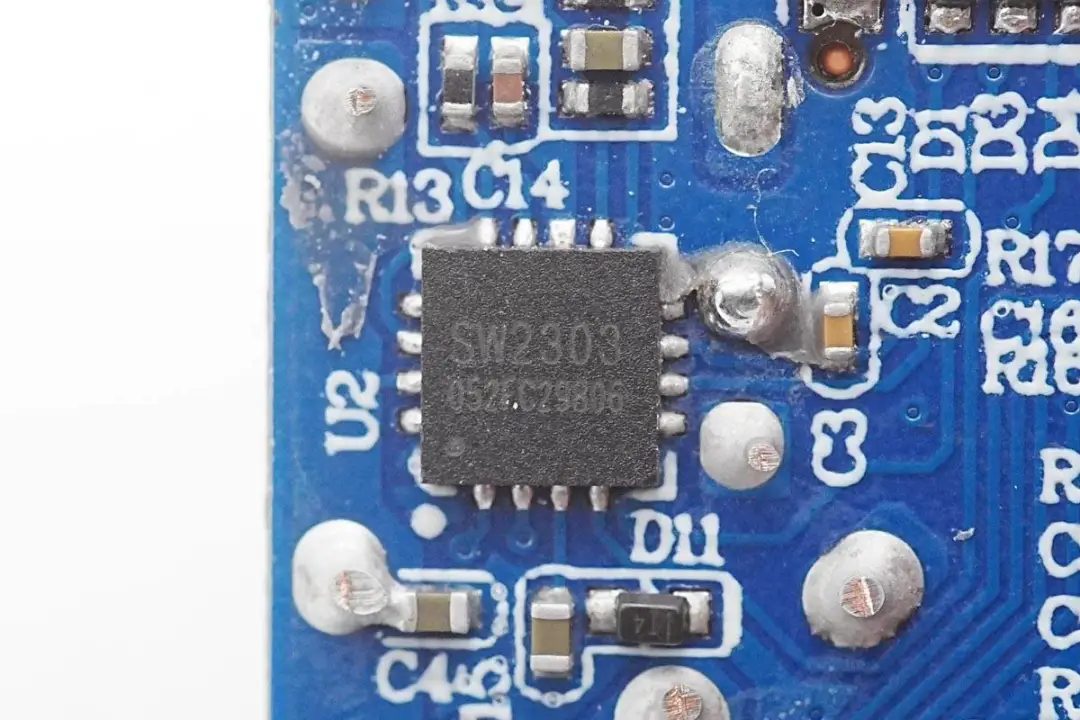
The interface protocol chip for another step-down circuit uses Zhirong SW2303, which is a highly integrated Type-C /Type-A fast charging protocol chip that supports mainstream fast charging protocols such as PD, QC, FCP, high and low voltage SCP, AFC, SFCP, and PE. It supports two working modes: optocoupler feedback and FB feedback.
The SW2303 integrates CV/CC control loops, Type-C interface logic, fast charging protocol controllers, and multiple safety protection functions. When combined with ACDC or DCDC and a small number of peripheral components, a complete high-performance Type-C port /Type-A port fast charging solution can be formed.

Detailed specification information of Zhirong SW2303.

The USB-C3 and USB-A output VBUS tubes are from Herna, model CWT3125AP, dual NMOS tubes, with a withstand voltage of 30V and a conduction resistance of 8.5mΩ, used for output control of two interfaces.

The secondary side also uses a single-chip microcomputer from Xinhai Technology for interface power distribution, overheat protection and PFC control functions. The model of the single-chip microcomputer is CSU38F20. It is an 8-bit single-chip microcomputer with a built-in 12-bit ADC and LED driver, and is packaged in MSOP10.

Detailed information of Xinhai Technology CSU38F20.
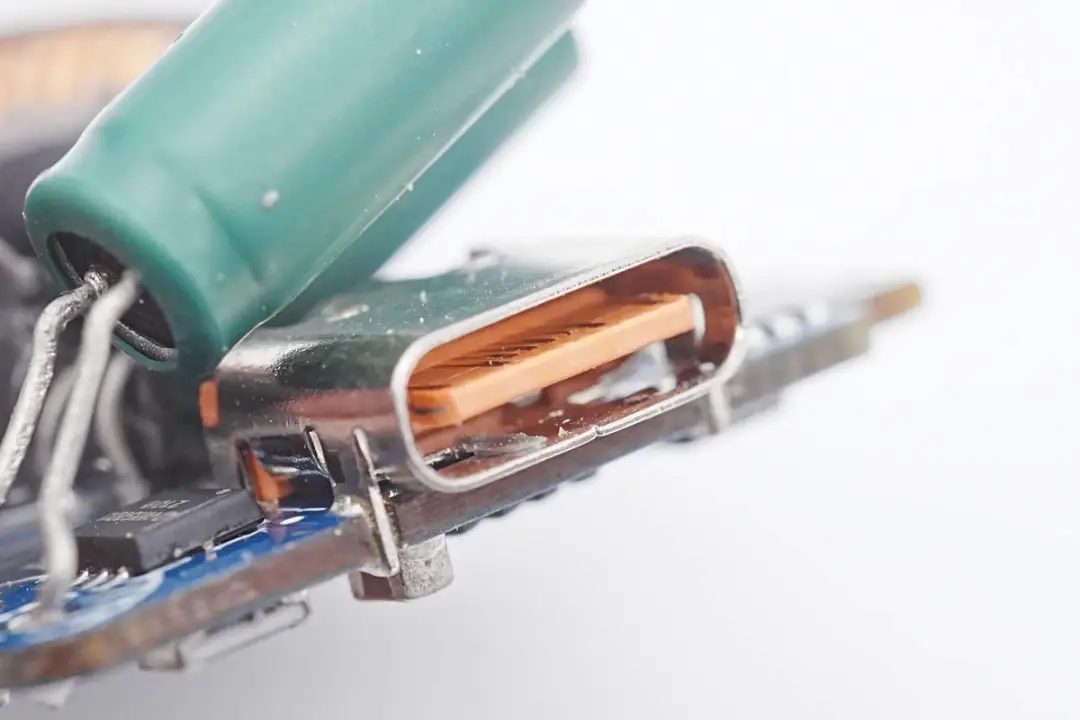
The output USB-C1 female socket adopts an orange rubber core and is fixed by via welding.
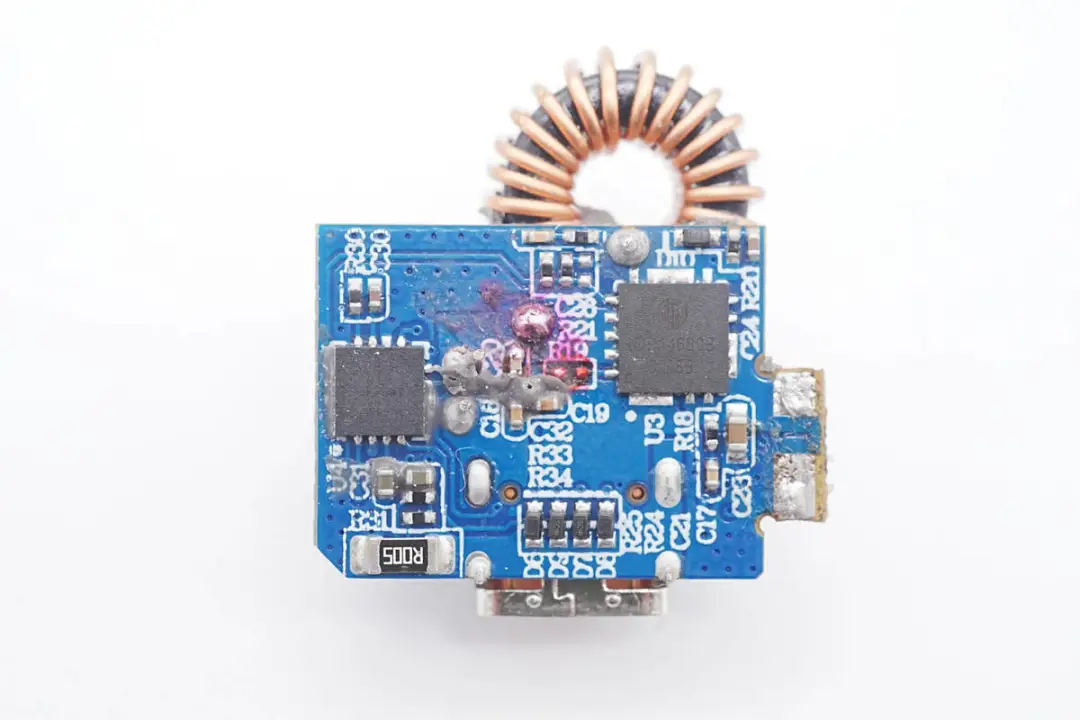
The back of the small board of USB-C2 is soldered with a synchronous step-down converter and a protocol chip.
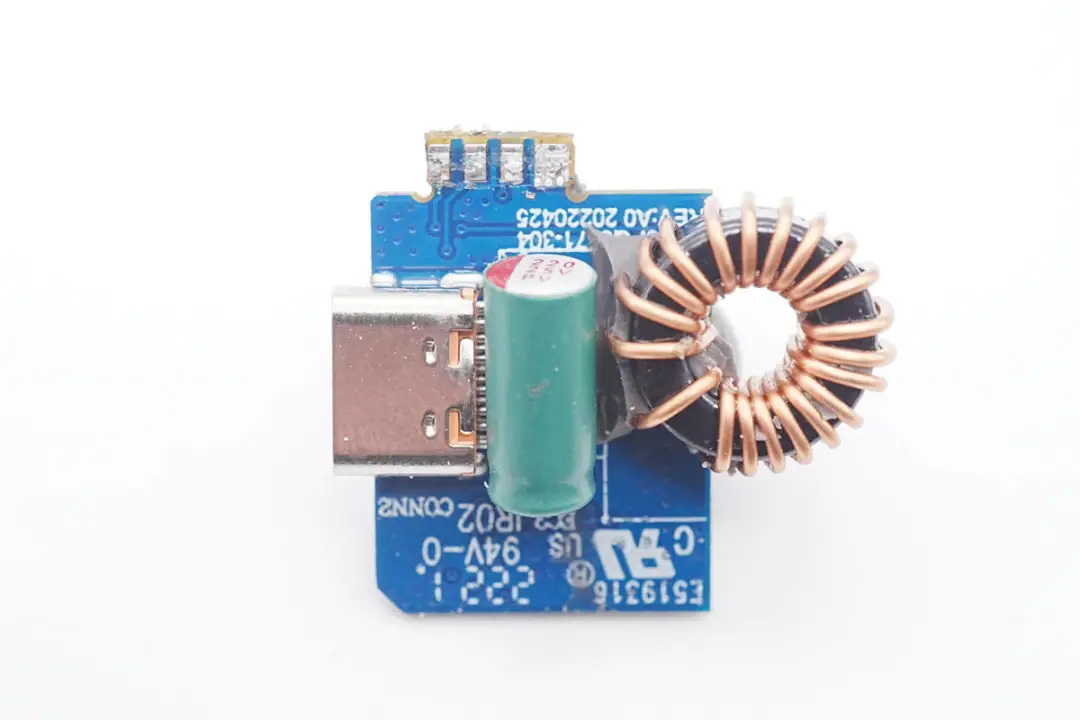
The front of the small board is welded with a voltage-reducing inductor and a filtering solid-state capacitor, and the solid-state capacitor is insulated by a heat shrink tube.

The synchronous step-down converter adopts NDP1460QB, which is the same model as the previous one.

The protocol chip adopts Zhirong SW2303, which is also the same model as the above.
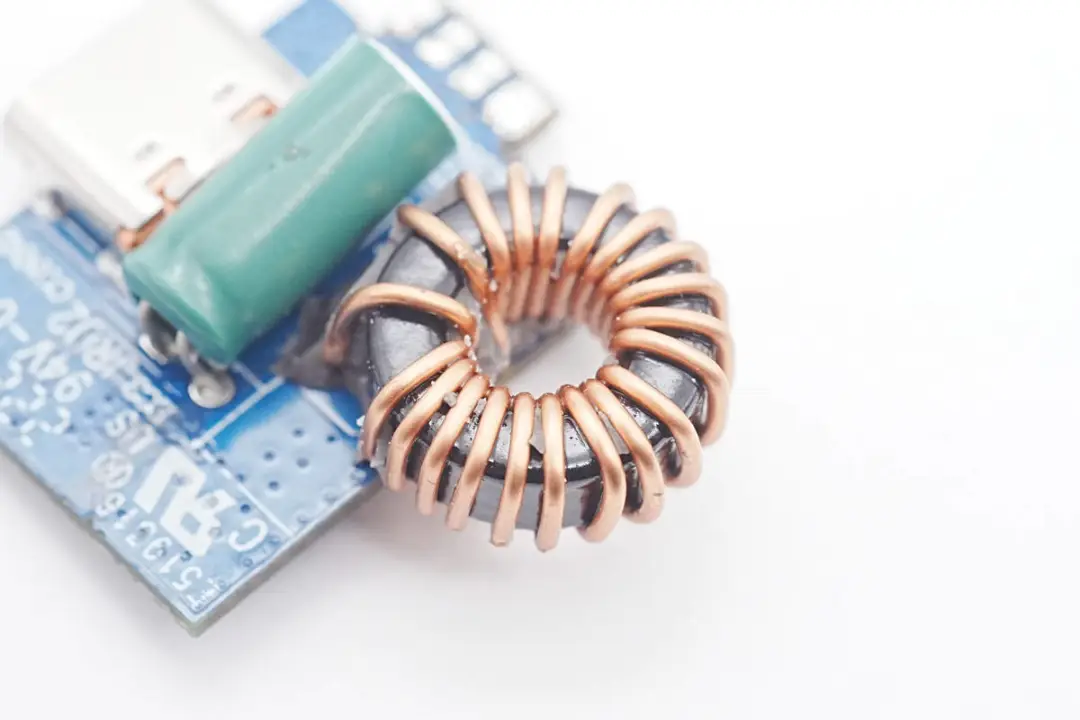
Close-up of the step-down inductor, featuring magnetic winding system.

The output filter capacitor is from Shaoguan Fushida and is a solid-state capacitor specifically designed for PV series fast charging.

Close-up of the USB-C2 female socket, with an orange rubber core, fixed by via soldering.
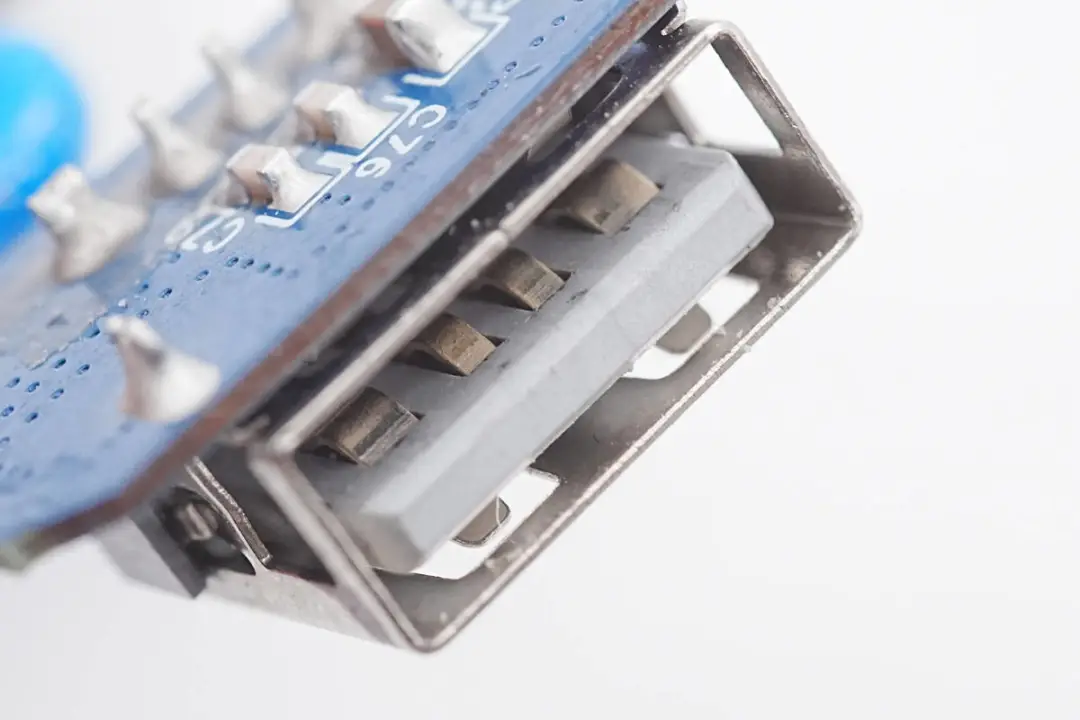
The positive and negative contacts of the USB-A interface are widened in design, supporting high current fast charging.

Take a complete disassembly and a family photo.
Charging Head Network Disassembly summary
This PANDAER 65W charger adopts a 2C1A three-interface design with a total output power of 65W, meeting the fast charging needs of daily mobile phones, laptops and other devices. The charger adopts a folding pin design, which is convenient to carry. The colorful shell color scheme makes the charger more eye-catching and unique.
Charging Head Network has learned through disassembly that the interior of this charger adopts potting technology, which can provide enhanced protection and heat dissipation performance for the charger, and also increase mechanical strength, making it less likely to be damaged by accidental drops. The primary of the charger adopts ON Semiconductor NCP1342 combined with NAVitas NV6115 gallium nitride power chip, and the secondary synchronous rectification adopts MPS MP6908A combined with CRSMM080N10L2 of China Resources Microelectronics, with a fixed voltage output.
The output adopts one Zhirong SW3516H for voltage reduction control, which is used for USB-C port output. The other USB-C and USB-A ports use Xintan Micro NDP1460QB in combination with Zhirong SW2303 for voltage reduction output. All three output ports are composed of independent voltage reduction circuits. The interior design of the charger is compact, with a distinctive appearance that is both beautiful and practical.
Source of the article: Charging Head Networkx